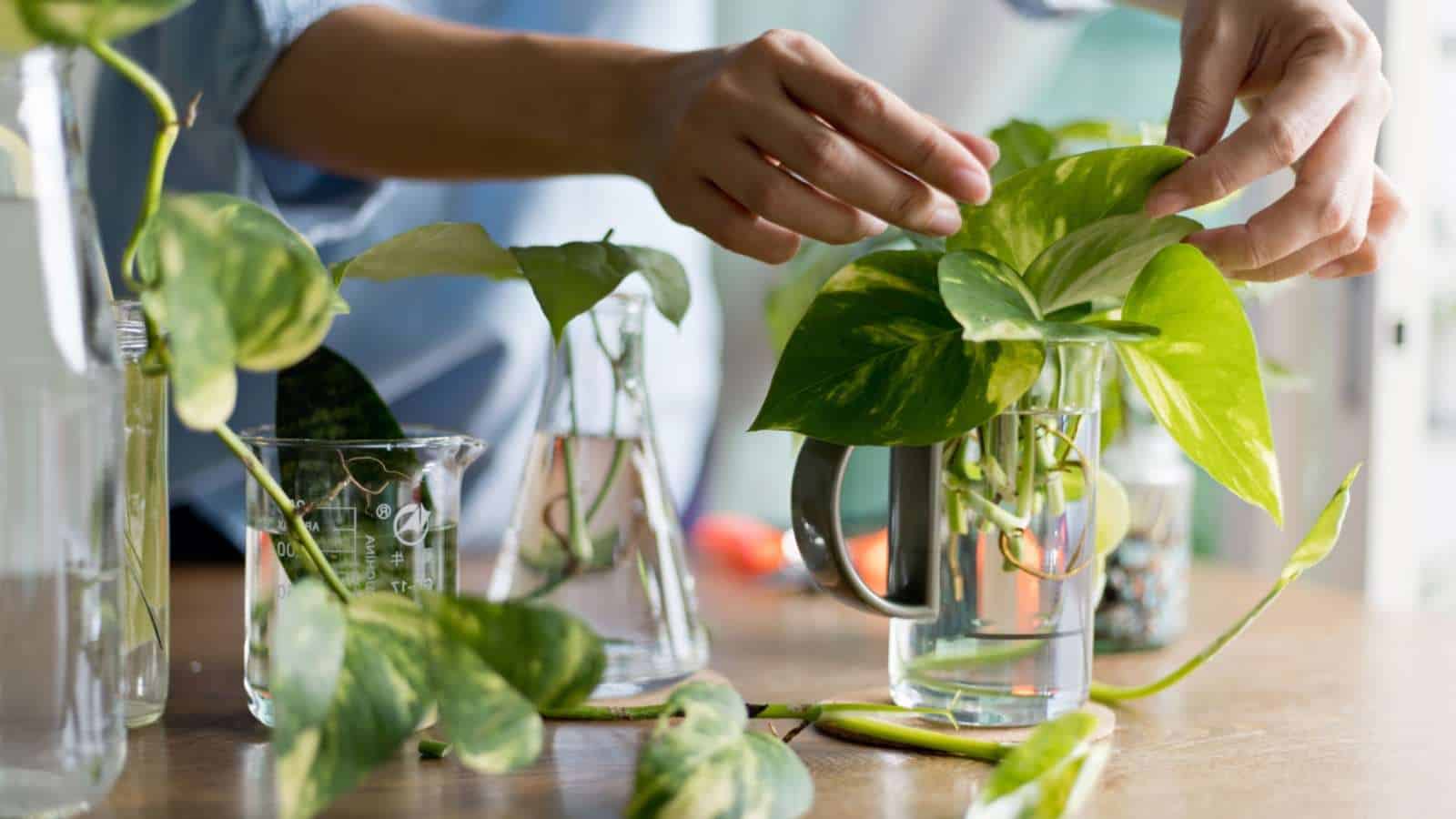[ad_1]
Vegetation that develop in water could possibly be a lifesaver! How often do you find yourself forgetting to water your houseplants? Or maybe you’d want to stay away from the difficulty of cleaning up potting soil altogether.
If that sounds comparable to you, how about making an attempt your hand at water gardening? These species are excellent for learners who wish to try hydroponics with houseplants.
Many widespread houseplant species can actually thrive when grown in water as an alternative of soil. An important chance for these of us who’re all the time on the go and pressed for time!
The pliability to establish roots from cuttings in an environment with fixed moisture is a genetic trait shared by many widespread houseplants.
Through the use of this adaptation, individuals who cultivate houseplants indoors can cultivate them in water alone, with out the need for soil.
You can merely receive this minimalist look by rising crops in glass jars or vases; they combine splendidly with kitchen and bathroom decor.
On this text, I’ll go over the ins and outs of rising houseplants in water, along with one of the best ways to water them appropriately and a list of 33 best crops that thrive in water as so much as soil.
1. African Violet (Saintpaulia ionantha)
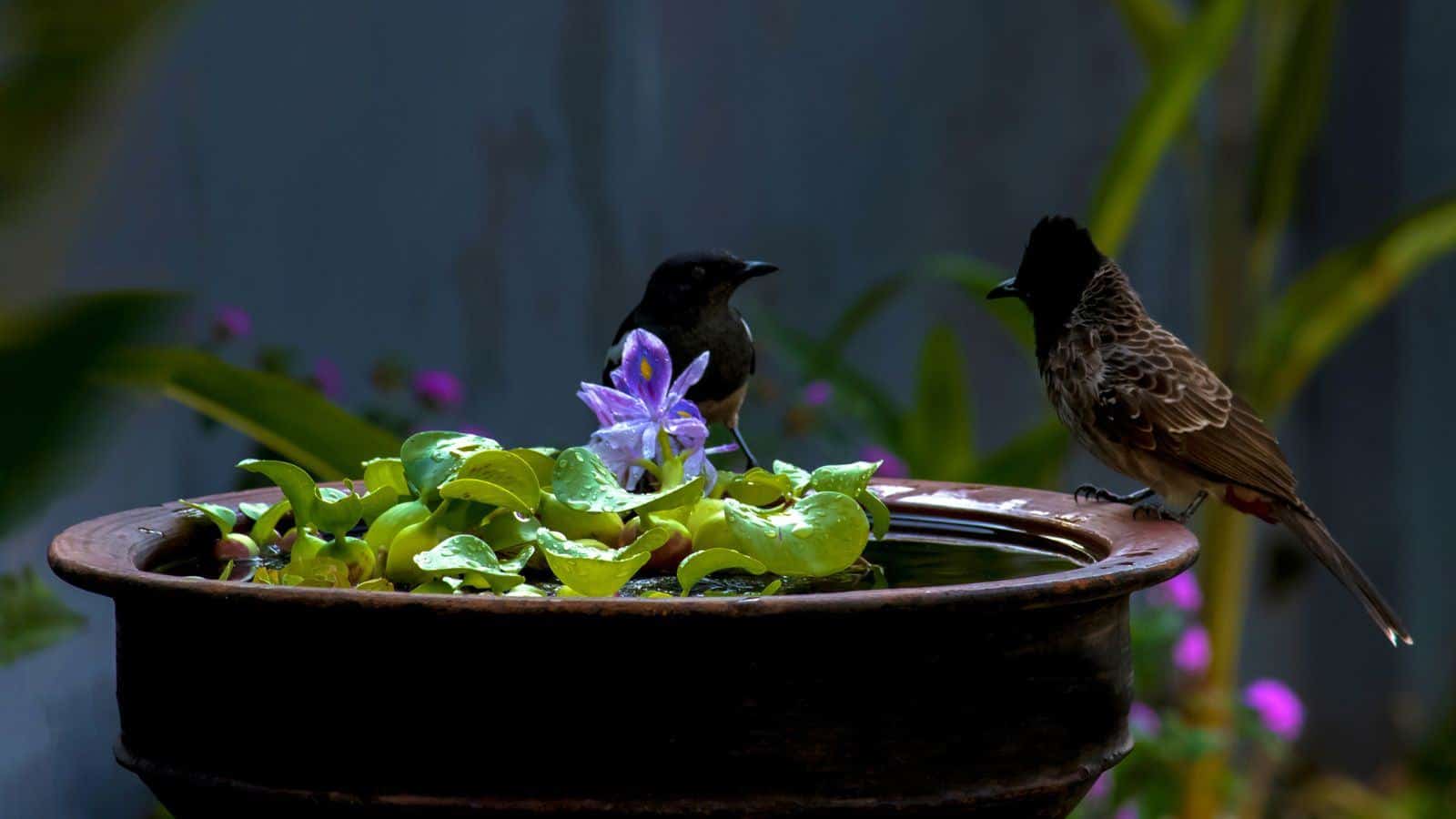
USDA Hardiness Zones: 11-12
Photo voltaic Publicity: Vibrant indirect delicate
African Violet, recognized scientifically as Saintpaulia ionantha, is probably going one of many hottest houseplants due to its vibrant foliage and low-maintenance requirements.
This vining plant is characterised by its inexperienced leaves and heart-shaped leaves, which develop from upright stems and make it a beautiful addition to any indoor yard.
African Violets are vigorous growers and could possibly be propagated merely from leaf nodes. They’re usually grown in a simple container of water, a jar, and even decorative vases.
The water provides the necessary nutritional vitamins the plant should thrive, and the clear vessel permits for monitoring of root improvement and algae improvement.
2. Youngster’s Tears (Soleiroliia soleiroliia)
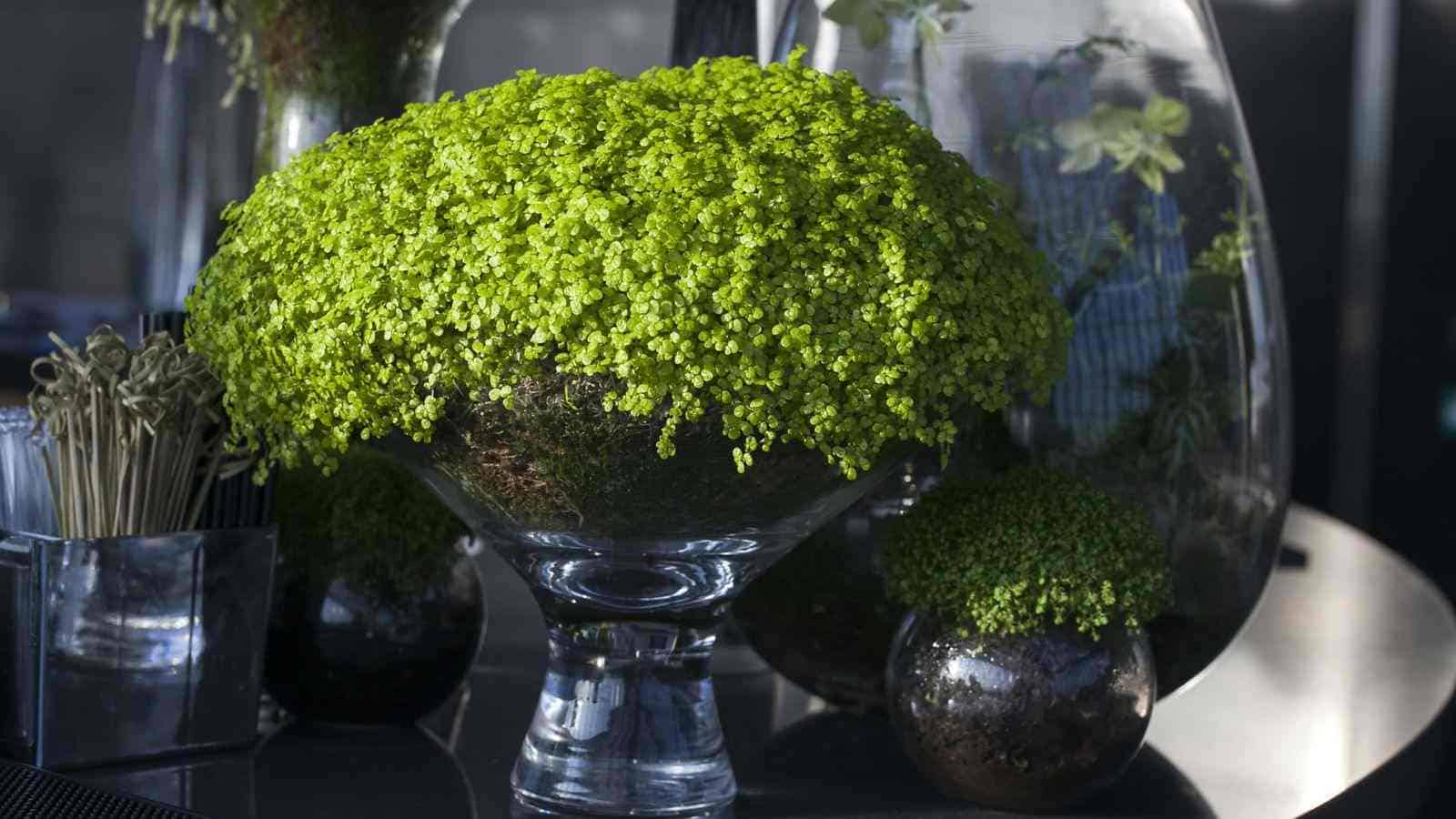
USDA Hardiness Zones: 10 – 11
Photo voltaic Publicity: Shade to Partial Photo voltaic
Youngster’s Tears, scientifically commonly known as Soleiroliia soleiroliia, is a popular houseplant recognized for its dense, mat-like improvement of small, vivid inexperienced leaves.
This vining plant is characterised by its delicate, heart-shaped leaves that develop alongside skinny, wiry stems.
What makes Youngster’s Tears explicit is its adaptability. It thrives in a selection of circumstances, from low delicate circumstances to vivid indirect delicate, and it’s a fantastic choice for these in search of low-maintenance houseplants.
Any gardener should keep in mind rising Youngster’s Tears due to its versatility. It could be grown in vases or completely different containers of water, the place it’s going to root on the leaf nodes and develop vigorously.
This plant may also be a tremendous choice for beginner growers as a result of it requires minimal care, merely assure it’s saved out of direct daylight to cease scorching the foliage.
To propagate, merely cut back a few stems, making certain each one has a minimal of 1 leaf node.
Place the stems in a jar or an opaque container of water to cease algae improvement. You need to use faucet water, nevertheless rain water or bottled water with out chlorine is preferable.
3. Begonia (Begonia spp.)
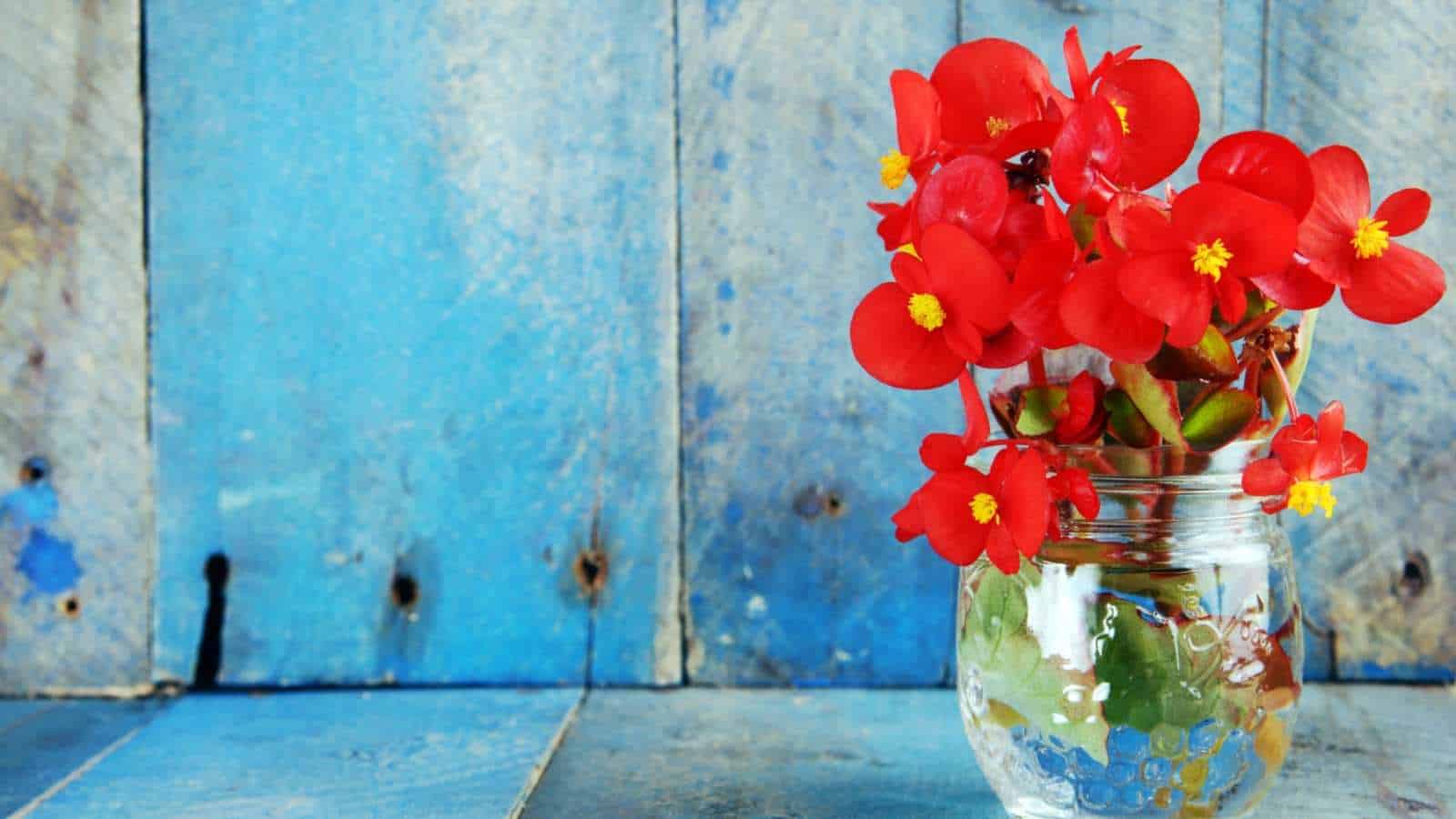
USDA Hardiness Zones: 10-11
Photo voltaic Publicity: Partial shade to full shade
Begonia, a popular houseplant, is a vining plant with heart-shaped leaves and a variety of foliage colors. It’s a low-maintenance plant that will thrive in a variety of circumstances, making it a favorite amongst every novice and expert growers.
What makes the Begonia explicit is its versatility. It’ll probably develop in low delicate circumstances or in vivid indirect delicate, however it certainly would not tolerate direct daylight.
Its inexperienced leaves could possibly be showcased in vases or any vessel that will keep water, equal to an opaque container or a jar.
In water custom, new crops could possibly be propagated from leaf nodes or stems, with the latter being preferred for his or her upright improvement.
So, within the occasion you’re in quest of a houseplant that’s simple to take care of and propagate, keep in mind Begonia.
4. Coleus (Pectranthrus scutellarioides)
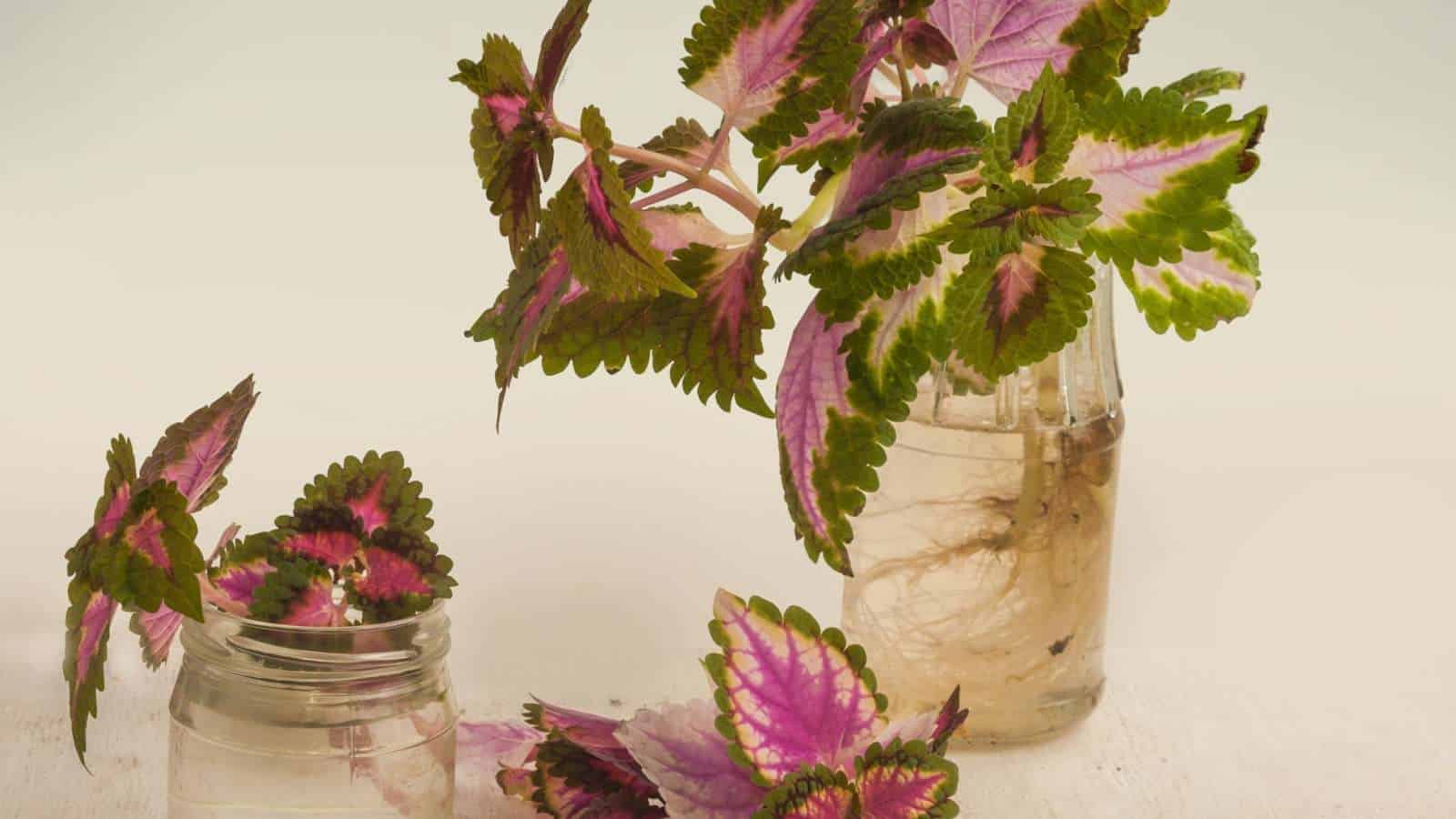
USDA Hardiness Zones: 10 – 11
Photo voltaic Publicity: Partial Shade to Full Shade
Coleus, scientifically commonly known as Pectranthrus scutellarioides, is a popular houseplant preferred by every novice and expert growers for its vibrant foliage and low-maintenance care requirements.
This vining plant boasts a surprising array of inexperienced leaves, often with distinctive, heart-shaped leaves that add a contact of attract to any indoor yard.
What makes it explicit is its means to thrive in water. Not like many houseplants that require soil and a well-drained pot, Coleus could possibly be grown in a simple container of water, equal to a jar or a vessel.
This makes it an outstanding choice for people who have the benefit of displaying their crops in vases, the place the upright stems and vibrant foliage could possibly be completely appreciated.
Coleus may also be a tremendous plant to propagate. Merely cut back below the leaf nodes, place the stalks in water, and watch as new roots type. It’s a rewarding course of that showcases the life cycle of crops in a tangible method.
5. Impatiens (Impatiens spp.)
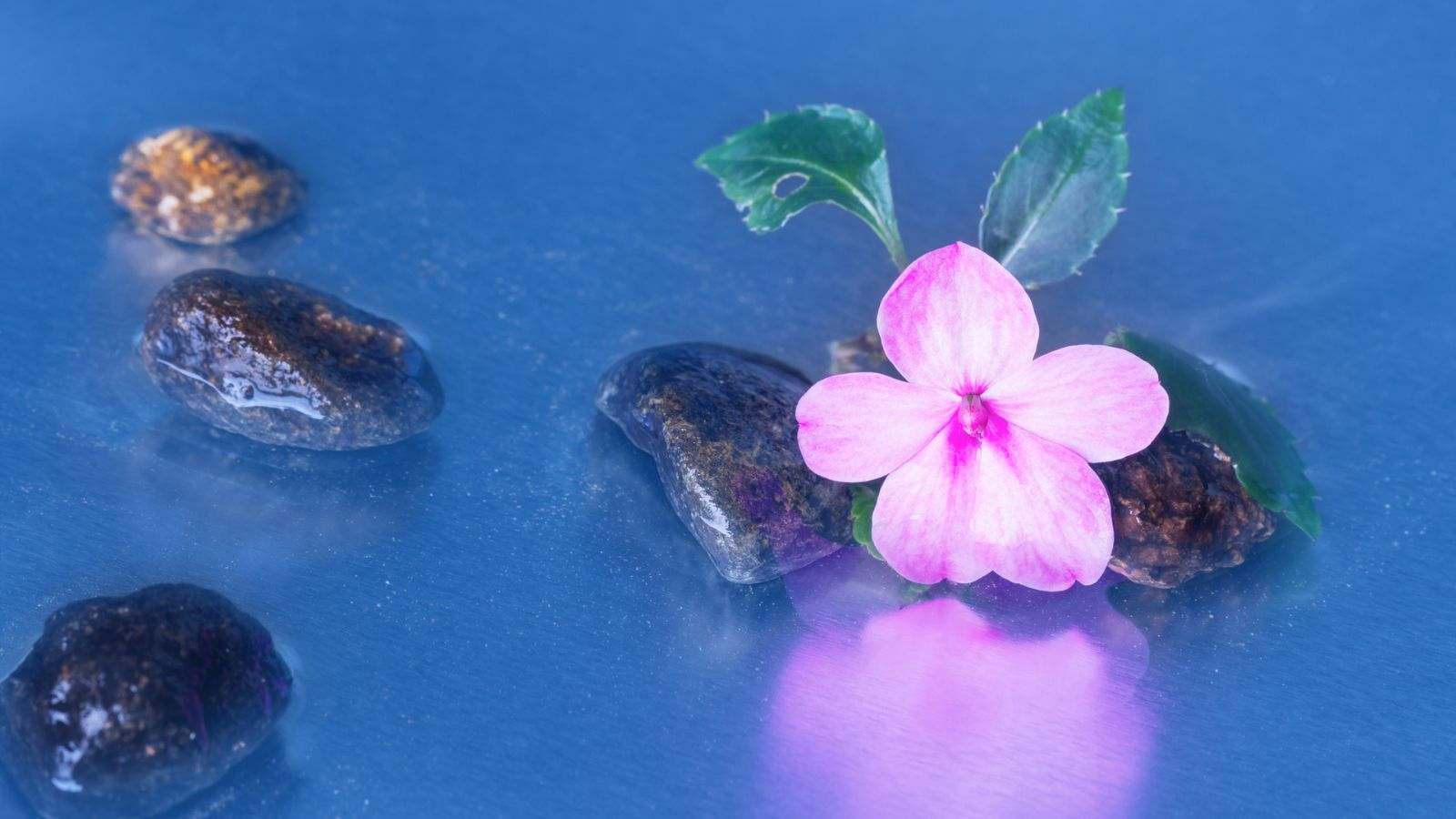
USDA Hardiness Zones: 10 – 11
Photo voltaic Publicity: Partial Shade to Full Shade
Impatiens are a popular houseplant recognized for his or her vibrant blooms and heart-shaped inexperienced leaves. They’re vining crops and could possibly be grown in water, making them an outstanding choice for people who need low-maintenance houseplants.
What makes Impatiens explicit is their means to thrive in a variety of circumstances. They’re vigorous growers, able to survive in every vivid indirect delicate and low delicate circumstances.
This makes them a versatile choice for indoor gardening, as they’re usually positioned in quite a few parts of the house counting on the sunshine circumstances.
Any gardener should keep in mind rising Impatiens because of they don’t seem to be solely beautiful however as well as simple to take care of. Merely place the stems, cut back slightly below the leaf nodes, in a container of water.
You need to use a jar, vases, or one other vessel. You need to undoubtedly use an opaque container to cease algae improvement.
For best outcomes, use rain water or bottled water, as faucet water can embody chlorine which may hinder the plant’s absorption of nutritional vitamins.
6. Lucky Bamboo (Dracaena sanderiana)
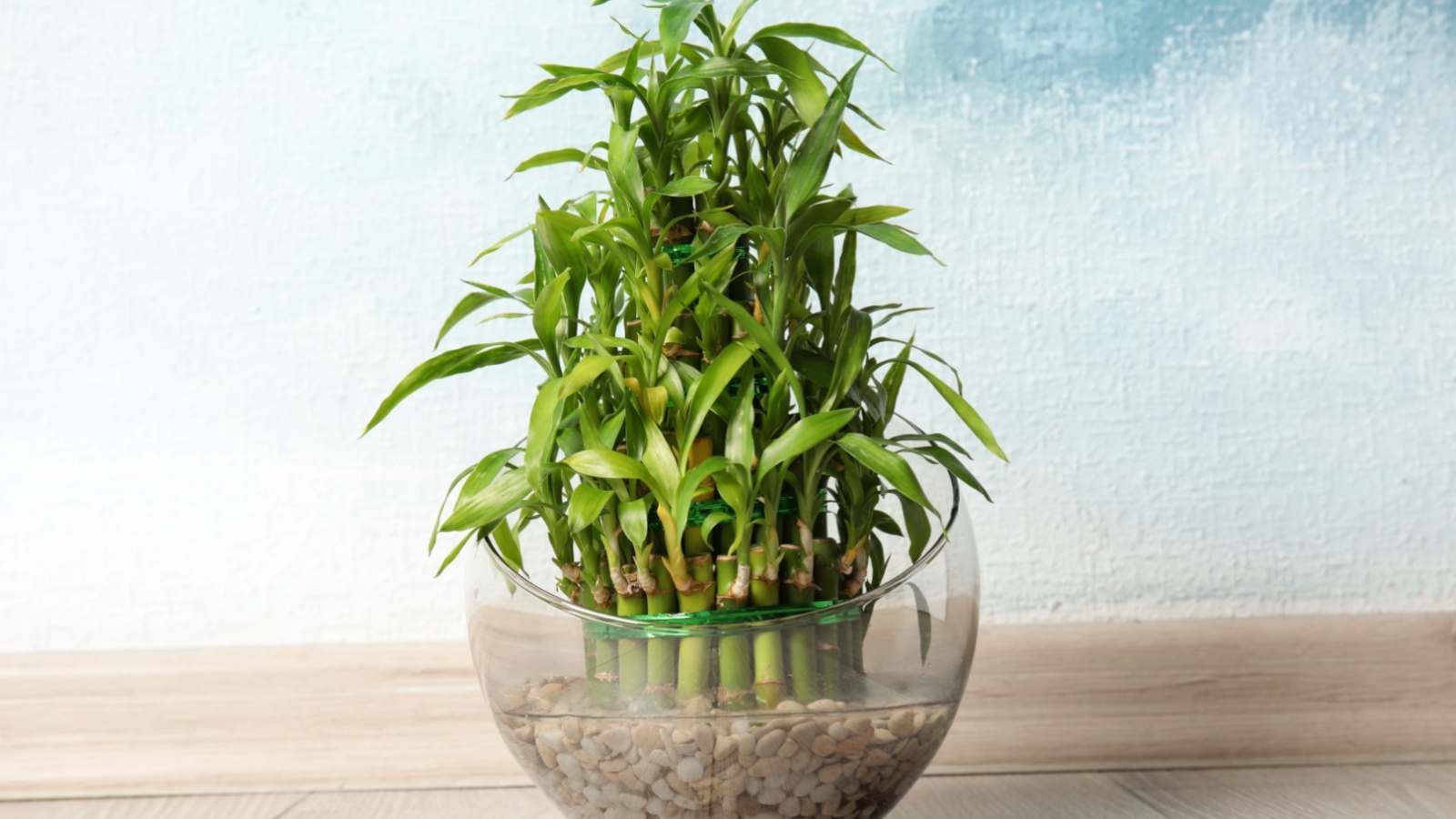
USDA Hardiness Zones: 10-11
Photo voltaic Publicity: Vibrant indirect delicate to low delicate circumstances
Lucky Bamboo, scientifically commonly known as Dracaena sanderiana, is a popular houseplant that stands upright with vibrant inexperienced leaves. It’s not a bamboo the least bit, nevertheless its stalks resemble these of bamboo, subsequently the title.
This houseplant is unique because of it’d in all probability develop absolutely in water, making it a low-maintenance choice for novice and expert growers alike.
What makes Lucky Bamboo explicit is its means to thrive in a simple vessel of water. Its stems, or stalks, develop vigorously in an upright technique, often spiraling with the help of just a little little bit of wire.
The leaves are heart-shaped, a trait that’s pretty attention-grabbing. It’s moreover a vining plant, which suggests it could be expert to develop in different directions.
7. Philodendron (Philodendron spp.)
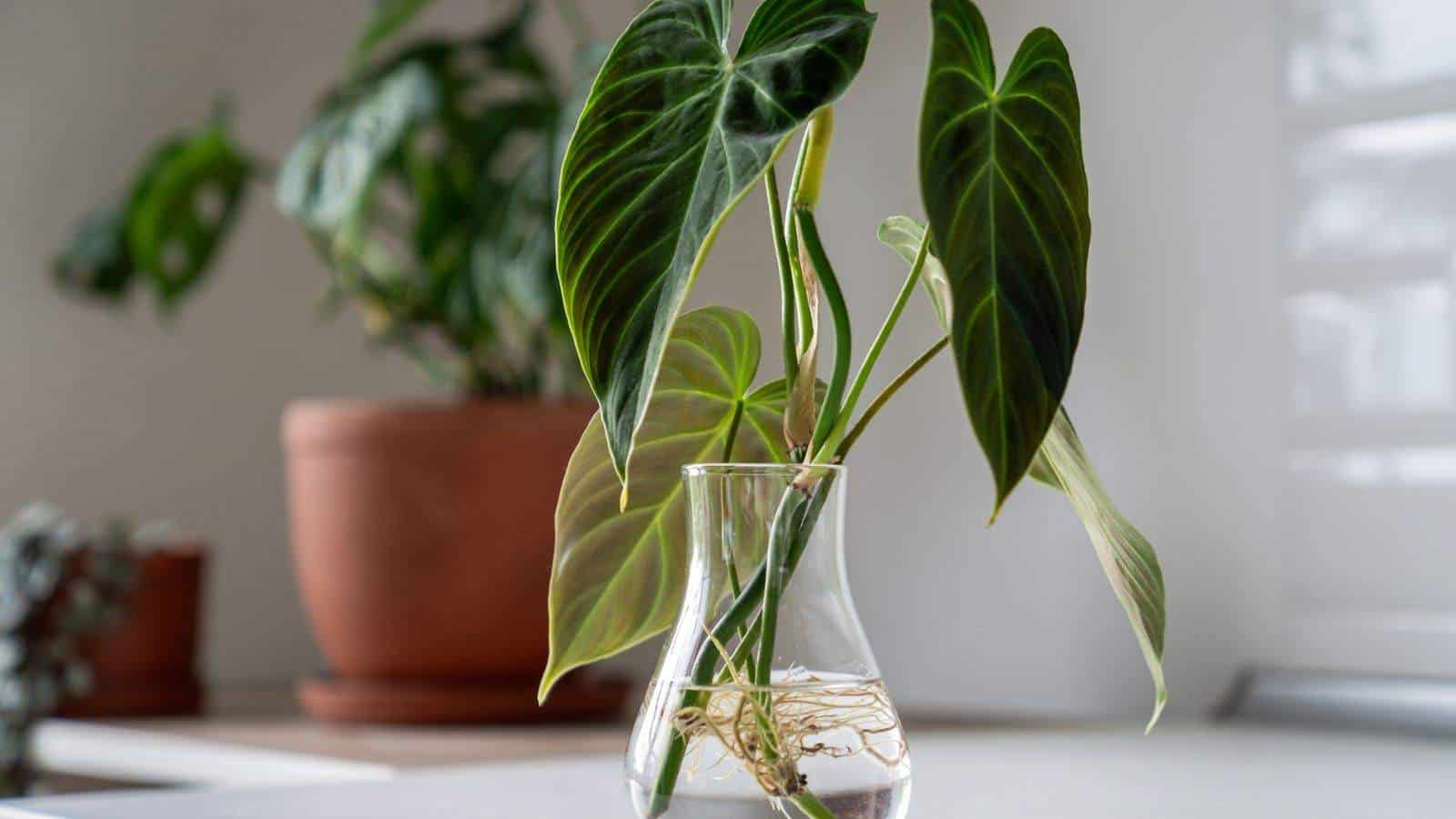
USDA Hardiness Zones: 9 – 11
Photo voltaic Publicity: Vibrant indirect delicate to low delicate circumstances
Philodendrons are quite a lot of the most well liked houseplants amongst every novice and expert growers due to their lush inexperienced leaves and low-maintenance care.
This vining plant, with its upright stems and heart-shaped leaves, brings a contact of tropical magnificence to any indoor setting.
What makes the Philodendron explicit is its adaptability. It’ll probably thrive in a variety of delicate circumstances, from vivid indirect delicate to shade, making it very good for indoor gardening.
Moreover, the Philodendron could possibly be merely propagated in water, allowing gardeners to have the benefit of its vibrant foliage with out the need for soil.
To boost their improvement, a dose of liquid fertilizer could possibly be added to their water container. This style, your Philodendron will not be going to solely develop however as well as thrive, making it a stupendous addition to your assortment of houseplants.
8. Spiderwort (Tradescantia zebrina)
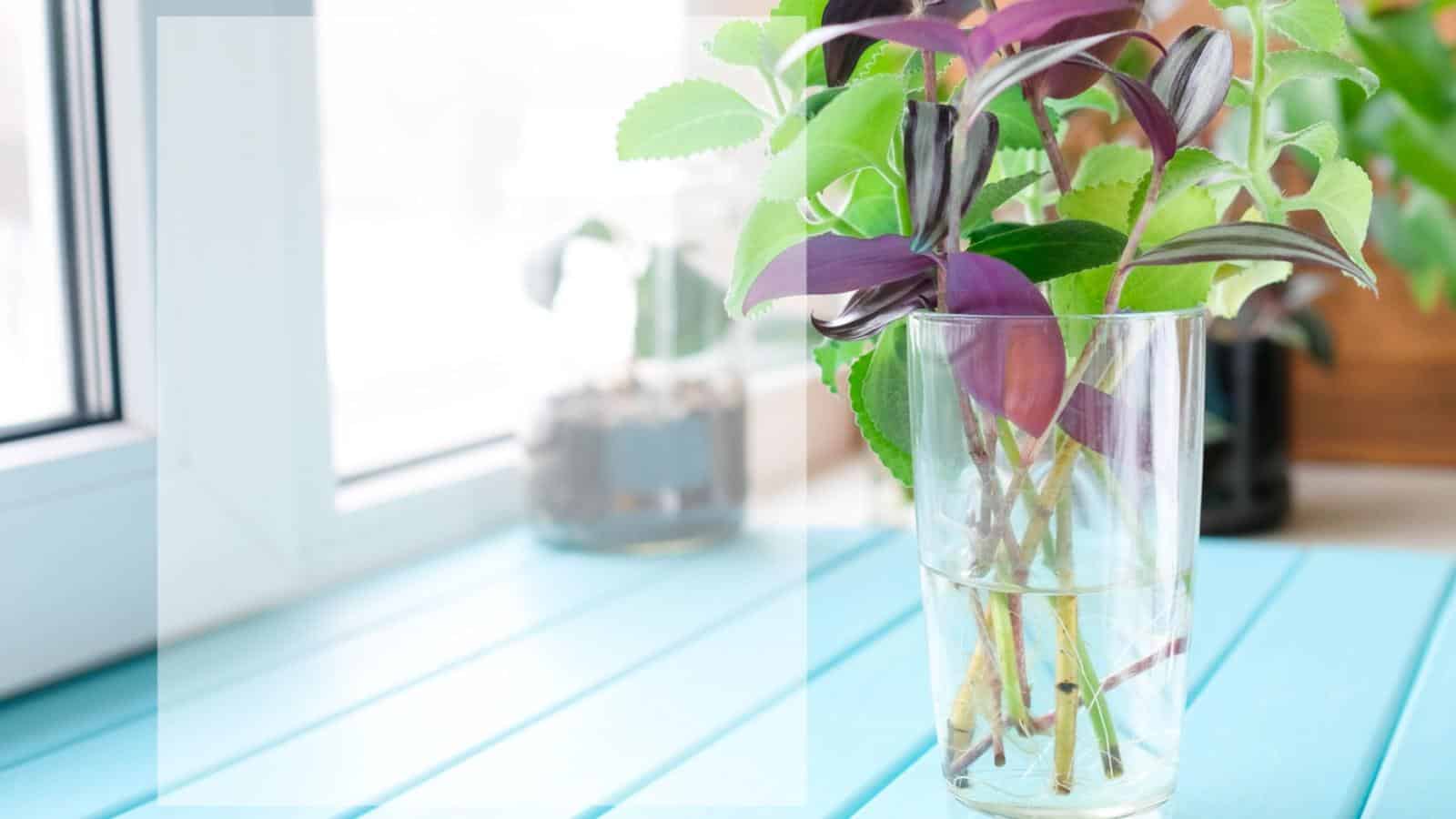
USDA Hardiness Zones: 9 – 12
Photo voltaic Publicity: Partial shade to full photo voltaic
Spiderwort, or Tradescantia zebrina, is a popular houseplant recognized for its placing inexperienced leaves, marked with silver, lavender, and even rose.
This vining plant boasts an upright improvement conduct, making it a beautiful addition to hanging baskets, vases, and whilst a ground cowl.
What makes Spiderwort explicit is its versatility and low-maintenance nature. It’s a vigorous grower that thrives in a variety of circumstances, from vivid indirect delicate to low delicate circumstances. The plant’s heart-shaped leaves and vibrant foliage add a contact of tropical attract to any room.
Gardeners should keep in mind rising Spiderwort because of it’s an outstanding choice for novice growers. It’s hardy, adaptable, and may even develop in a container of water, eliminating the need for soil.
Merely place the cut back stems in a jar or completely different vessel and alter the water weekly to cease algae improvement. Stay away from using faucet water as a result of the chlorine can hinder improvement; as an alternative, use rain water or bottled water.
9. Pothos (Epipremnum aureum)
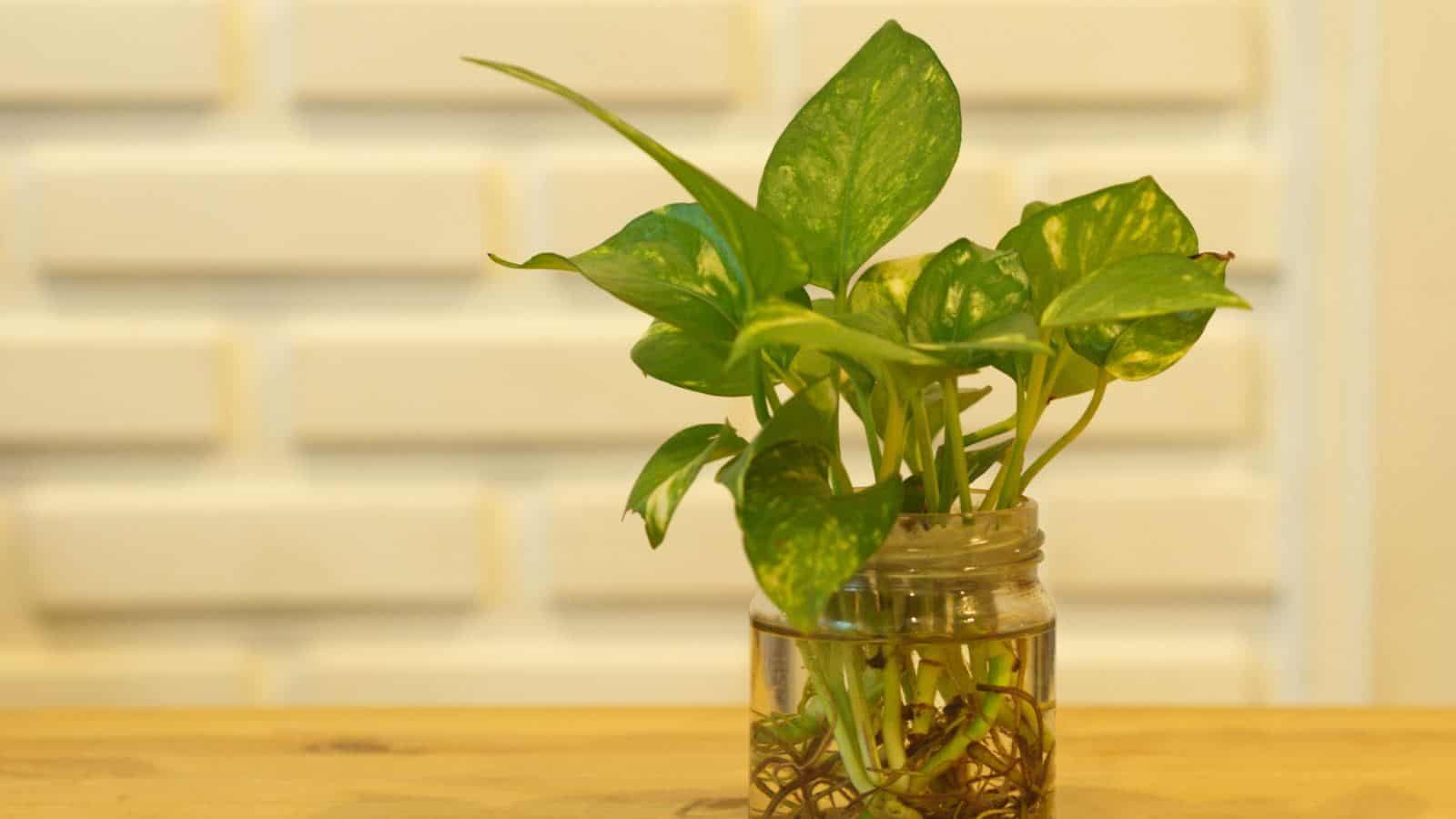
USDA Hardiness Zones: 10 – 11
Photo voltaic Publicity: Low delicate to vivid indirect delicate
Pothos, usually often known as Epipremnum aureum, is probably going one of many hottest houseplants due to its low-maintenance nature and pleasant, heart-shaped inexperienced leaves.
This vigorous grower thrives in a variety of circumstances, making it a favorite amongst every novice and expert gardeners.
What makes the Pothos explicit is its means to adapt to water custom. This vining plant could possibly be grown in a vessel equal to a jar, vase, or any opaque container full of water.
The stems, or stalks, of the Pothos plant could possibly be cut back slightly below the leaf nodes and positioned in a container of water the place they will type new roots.
Any gardener should keep in mind rising Pothos because of it’s a great way to have the benefit of indoor gardening with out the fuss. It thrives in low delicate circumstances, making it good for these areas in your home that don’t get direct daylight.
Moreover, Pothos is known to be a tremendous air-purifying plant, eradicating toxins from the air in your home.
10. Chinese language language Evergreen (Aglaonema commutatum)
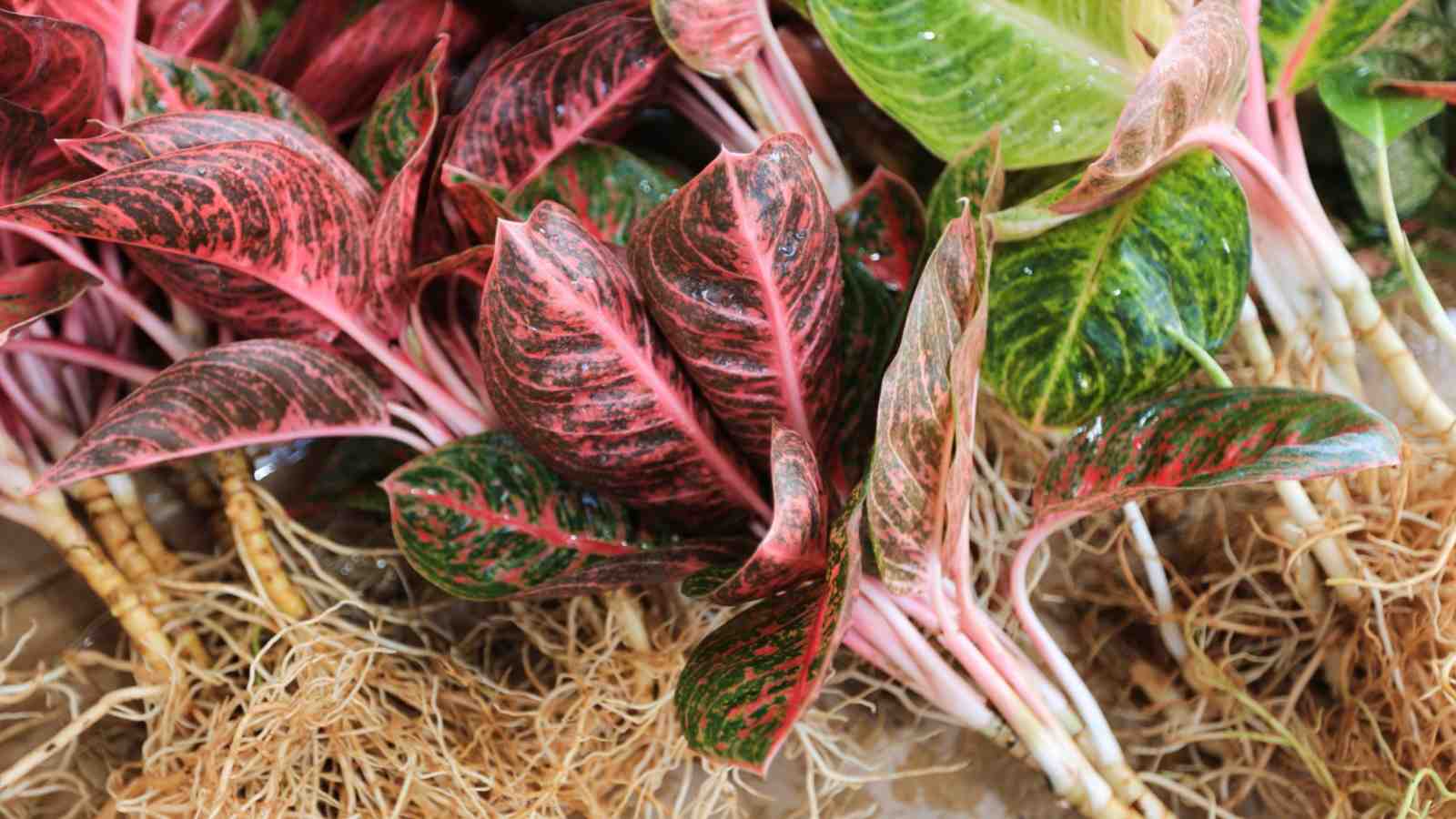
USDA Hardiness Zones: 10-11
Photo voltaic Publicity: Low delicate to vivid indirect delicate
Chinese language language Evergreen, usually often known as Aglaonema commutatum, is probably going one of many hottest houseplants amongst every novice and expert growers due to its lovely foliage and low-maintenance nature.
Its shiny, heart-shaped leaves are a rich inexperienced shade, which could add a vibrant contact to any indoor setting.
What makes the Chinese language language Evergreen explicit is its means to develop in water. This vining plant could possibly be propagated using solely a jar or completely different vessel full of water.
You merely cut back the stems below the leaf nodes and place them upright inside the container of water.
To forestall algae improvement, it’s best to utilize an opaque container and alter the water recurrently.
For optimum improvement, you probably can add a liquid fertilizer to provide the necessary nutritional vitamins. Rain water, bottled water or faucet water that has been uncared for to allow the chlorine to evaporify will be utilized.
11. English Ivy (Hedera helix)
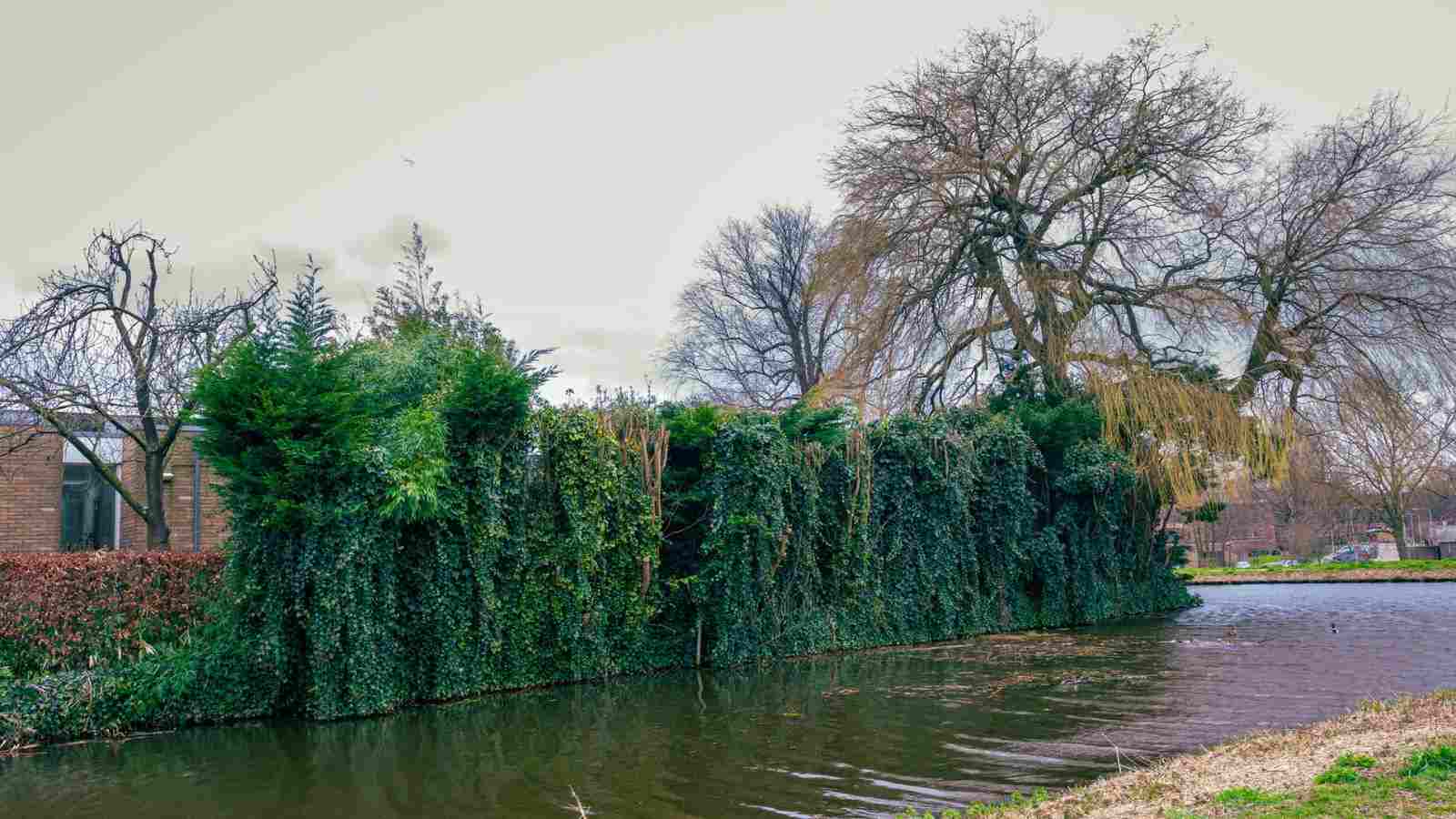
USDA Hardiness Zones: 4-9
Photo voltaic Publicity: Partial Shade to Full Photo voltaic
English Ivy, or Hedera helix, is a popular houseplant recognized for its vining improvement conduct and plush, inexperienced leaves. This vigorous grower is characterised by its heart-shaped leaves and a bent to climb or path, making it an outstanding choice for hanging baskets or as a ground cowl in shady areas.
What makes English Ivy explicit is its adaptability and resilience. It’ll probably thrive in a variety of circumstances, from low delicate circumstances to vivid indirect delicate, making it a favorite amongst every novice and expert growers.
Its stems are sturdy and upright, supporting the dense foliage that is often utilized in vases or completely different decorative vessels for a contact of greenery.
Any gardener should keep in mind rising English Ivy not just for its aesthetic enchantment, however as well as for its low-maintenance nature. It could be grown in a container of water, with the leaf nodes submerged to encourage root improvement.
This system can forestall widespread factors like algae improvement, often associated to using opaque containers.
12. Spider Plant (Chlorophytum comosum)
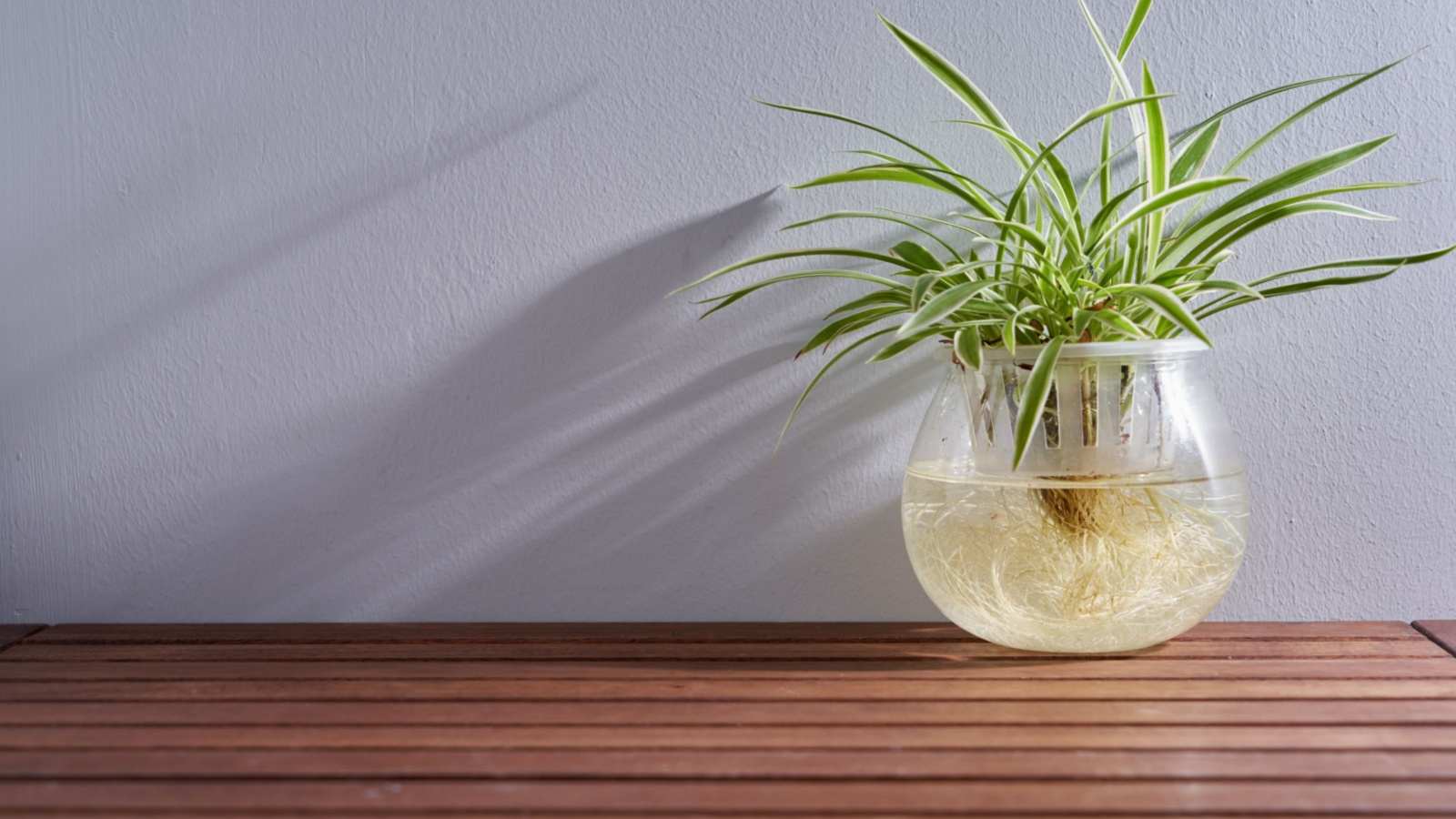
USDA Hardiness Zones: September 11
Photo voltaic Publicity: Vibrant indirect delicate to low delicate circumstances
Spider Plant, scientifically commonly known as Chlorophytum comosum, is a particularly widespread houseplant recognized for its vibrant inexperienced leaves and low-maintenance care requirements.
This vining plant is a vigorous grower, producing prolonged, arching stems adorned with small, white flowers.
What makes the Spider Plant explicit is its means to thrive in a variety of circumstances. It is an upright plant with prolonged, slender stalks that keep clusters of heart-shaped leaves.
These leaves are a lush inexperienced and are generally variegated with white or yellow stripes, together with a splash of shade to any indoor space.
13. Dracaena (Dracaena or Cordyline spp.)
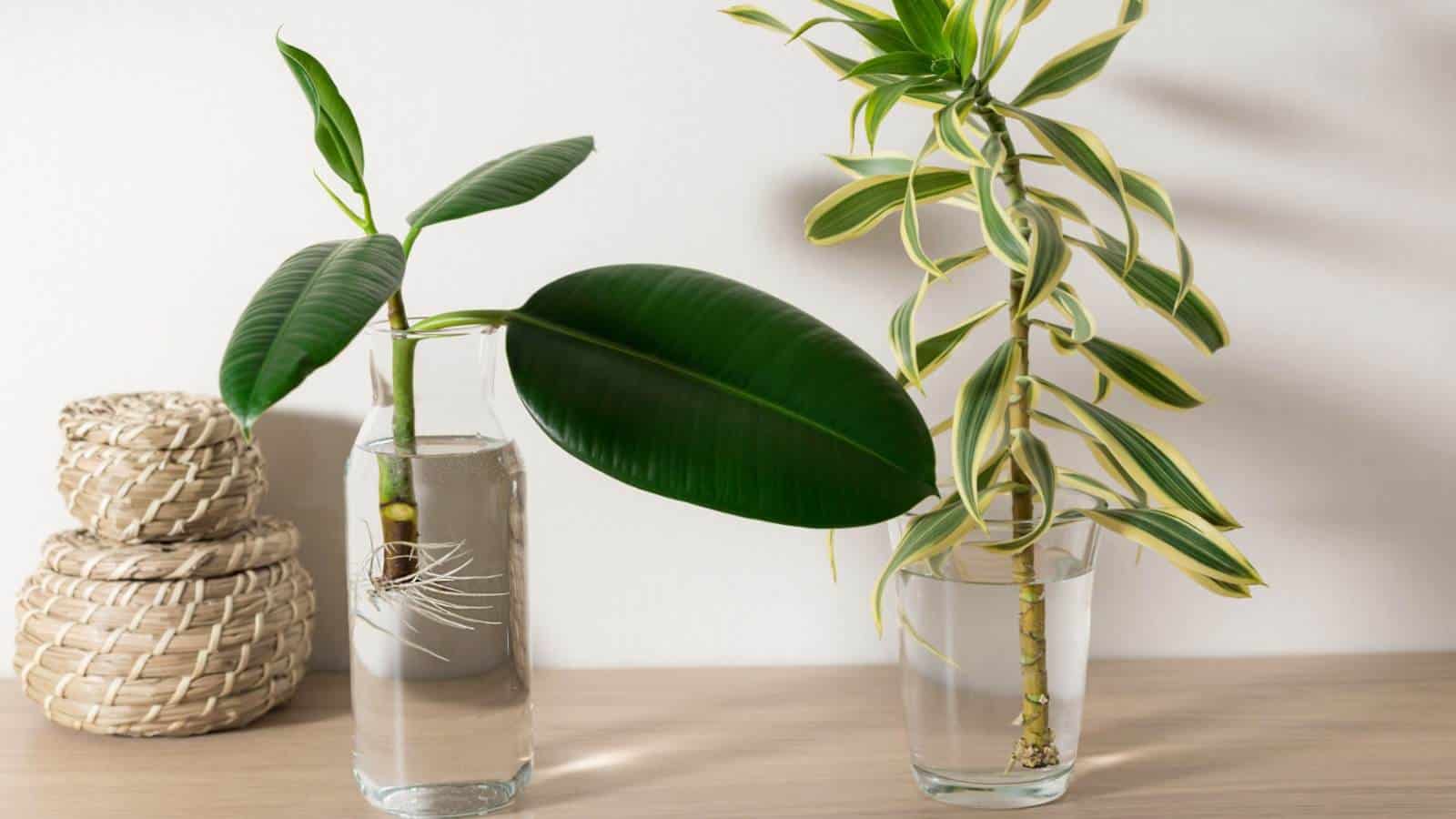
USDA Hardiness Zones: 10-12
Photo voltaic Publicity: Partial Shade to Full Photo voltaic
Dracaena, usually often known as Cordyline, is a popular houseplant that may be grown in water. These low-maintenance crops have beautiful, upright stems adorned with inexperienced leaves that will range from heart-shaped to lanceolate.
What makes Dracaena explicit is its adaptability. This vining plant can thrive in a variety of circumstances from vivid indirect delicate to low delicate circumstances, making it a favorite amongst every novice and expert growers.
Its vigorous improvement conduct and fascinating foliage make it an outstanding choice for adorning areas with a contact of nature.
Dracaenas are good for vases as their stems develop upright, and their bulbs could possibly be waxed for an added aesthetic contact. Their low maintenance and extreme adaptability make them important for any indoor yard.
14. Peace Lily (Spathiphyllum spp.)
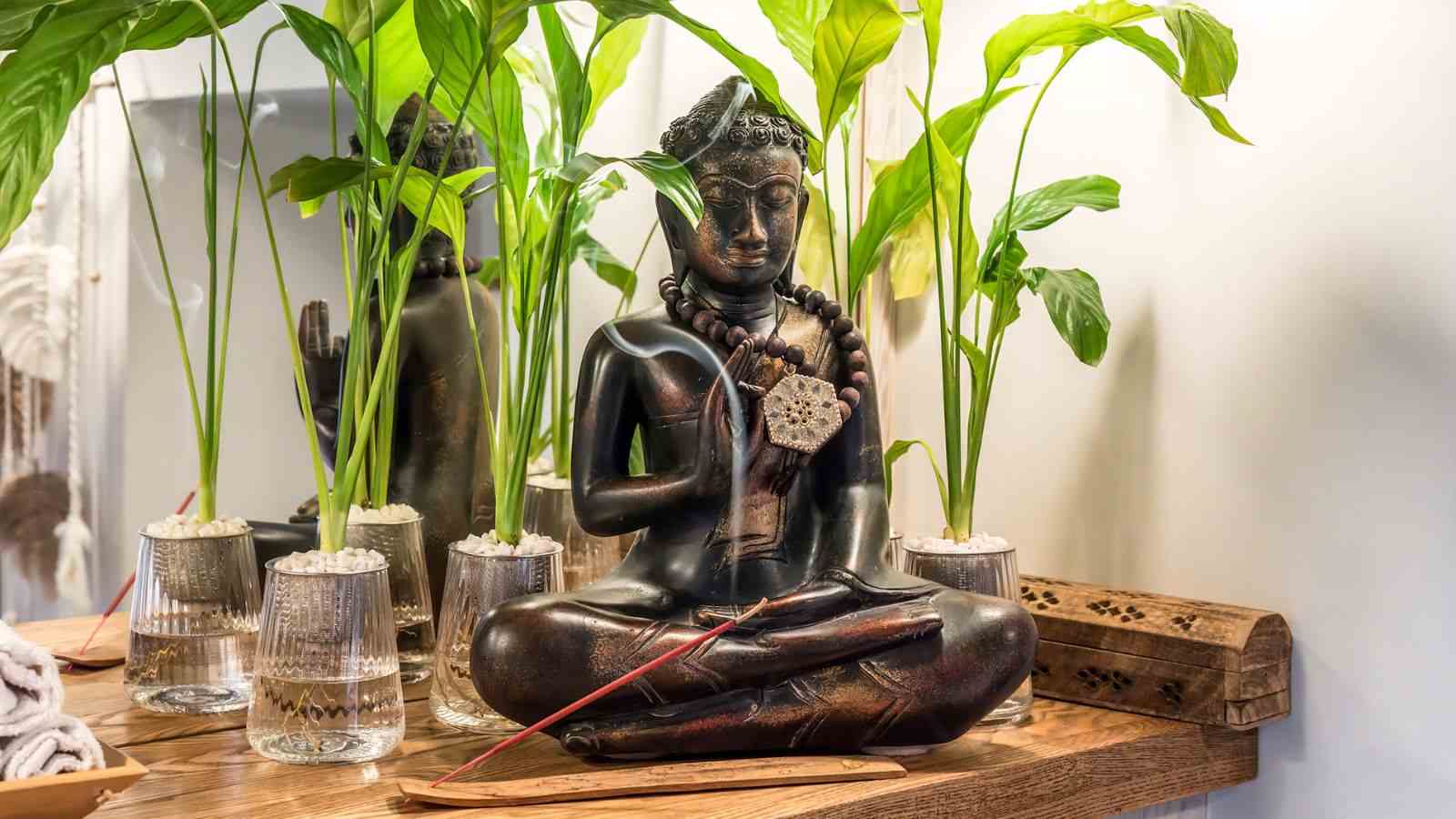
USDA Hardiness Zones: 11-12
Photo voltaic Publicity: Low to vivid indirect delicate
Peace Lily, scientifically commonly known as Spathiphyllum spp., is probably going one of many hottest houseplants amongst every novice and expert growers.
It’s recognized for its shiny, inexperienced leaves and its distinctive, elegant white flowers that rise upright above the foliage.
What makes the Peace Lily explicit is its adaptability to a variety of circumstances. It thrives in low delicate circumstances and may even tolerate direct daylight, making it a versatile choice for any indoor ambiance.
Its heart-shaped leaves and vining plant nature add a contact of magnificence to any room.
For optimum improvement, use an opaque container to cease delicate from promoting algae improvement.
15. Pancake Plant (Pilea peperomioides)
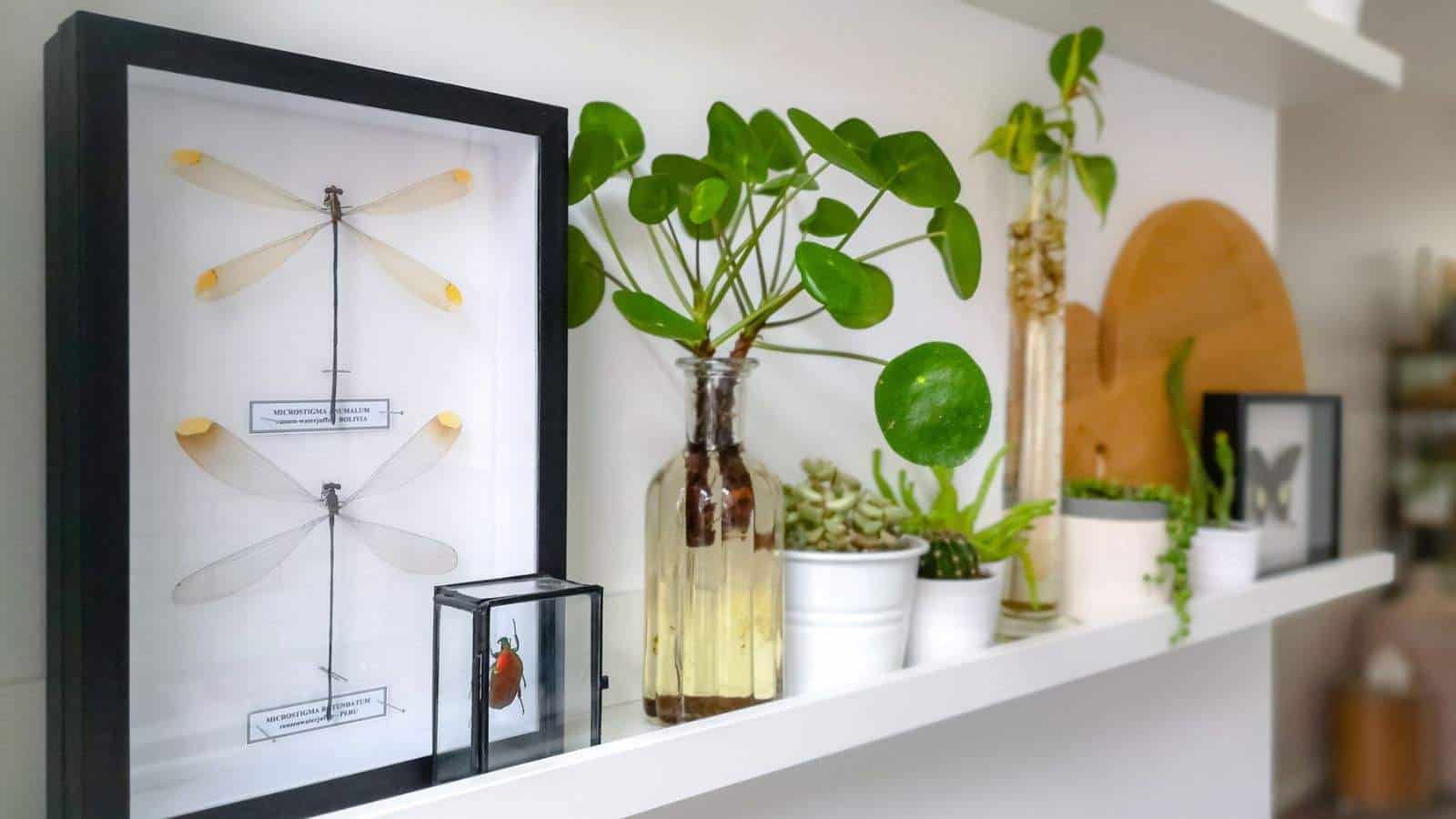
USDA Hardiness Zones: 10-11
Photo voltaic Publicity: Vibrant indirect delicate to low delicate circumstances
Pancake Plant, usually often known as Pilea peperomioides, is a popular houseplant with spherical, inexperienced leaves that resemble pancakes, subsequently the title.
This plant is native to the Yunnan Province in Southern China and has a rich historic previous of being handed down through generations as a gift amongst buddies.
What makes the Pancake Plant explicit is its distinctive, upright improvement pattern and its large, spherical, inexperienced leaves.
These leaves often are usually not solely aesthetically pleasing however as well as act as a result of the plant’s important strategy of photosynthesis. The plant’s stems are sturdy, allowing it to care for its upright posture.
16. Lotus (Nelumbo spp.)
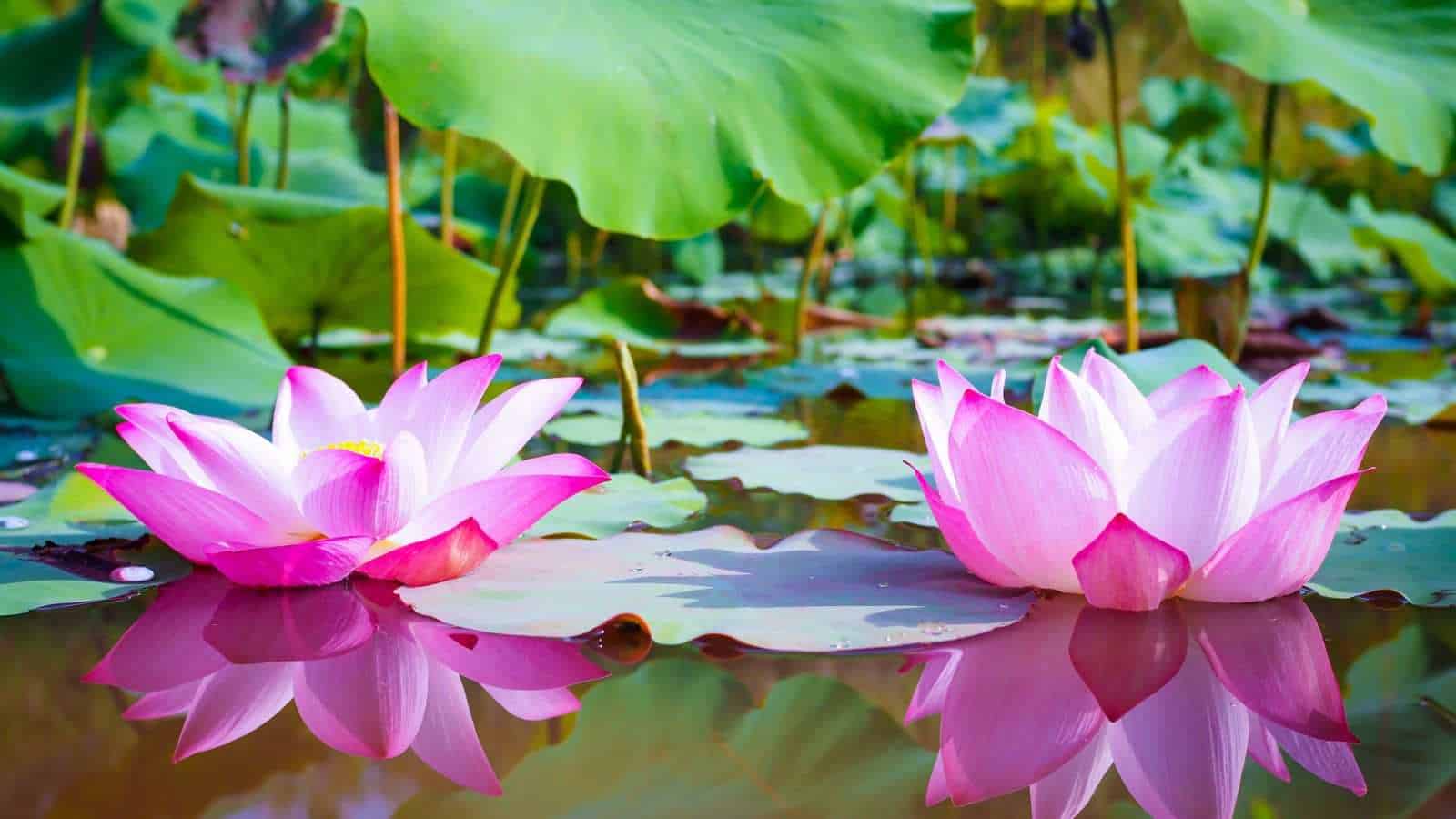
USDA Hardiness Zones: 4 – 10
Photo voltaic Publicity: Full Photo voltaic
Lotus (Nelumbo spp.) is a popular houseplant amongst growers due to its vibrant inexperienced leaves and distinctive, heart-shaped leaves.
This aquatic plant is not solely a surprising seen addition to any indoor or exterior yard, however it certainly moreover thrives in a simple vessel of water, equal to a jar or vase, making it a low-maintenance choice for every beginner and expert gardeners.
Gardeners should keep in mind rising Lotus for its ease of care and placing seen enchantment. It thrives in vivid indirect delicate nevertheless can also tolerate low delicate circumstances.
The plant prefers rain water or bottled water over faucet water, as chlorine can damage its improvement. However, if faucet water is the one chance, it could be left to sit down in a single day to allow the chlorine to evaporize sooner than use.
17. Rosemary (Salvia rosmarinus)
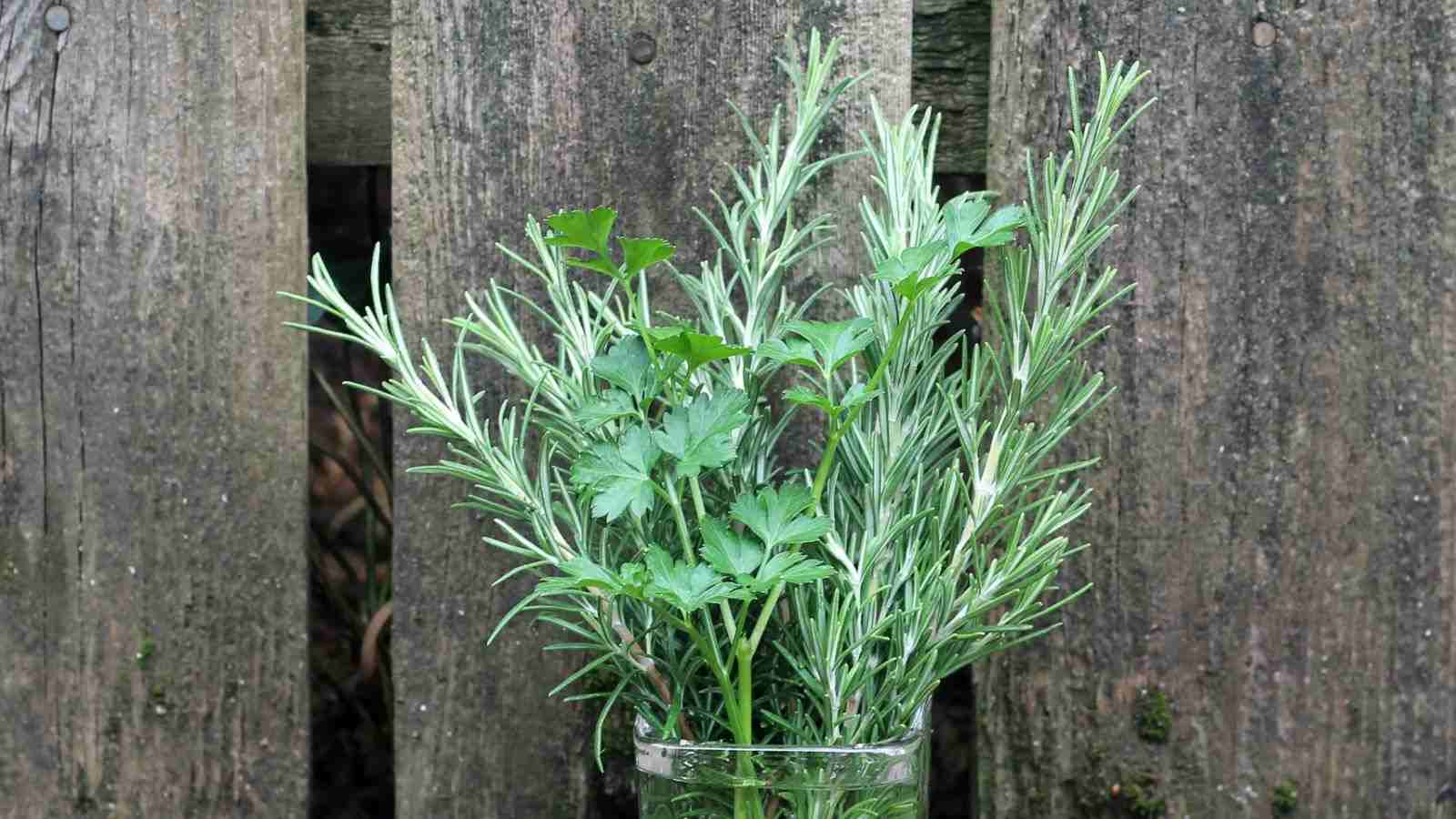
USDA Hardiness Zones: 7-10
Photo voltaic Publicity: Full Photo voltaic
Rosemary (Salvia rosmarinus) is a popular houseplant recognized for its aromatic foliage and memorable resilience. It stands upright with sturdy stems, offering a refreshing inexperienced hue to any indoor setting.
What makes this plant explicit is its low-maintenance nature. It thrives even in low delicate circumstances, making it a fantastic choice for indoor gardening.
Rosemary is a vigorous grower which may be merely propagated in a container of water. Merely cut back a piece from the plant, making certain to include a few leaf nodes, and place it in a vessel full of faucet water.
Consider to range the water recurrently to cease algae improvement and ensure the plant will get the nutritional vitamins it needs.
18. Mint (Mint spp.)
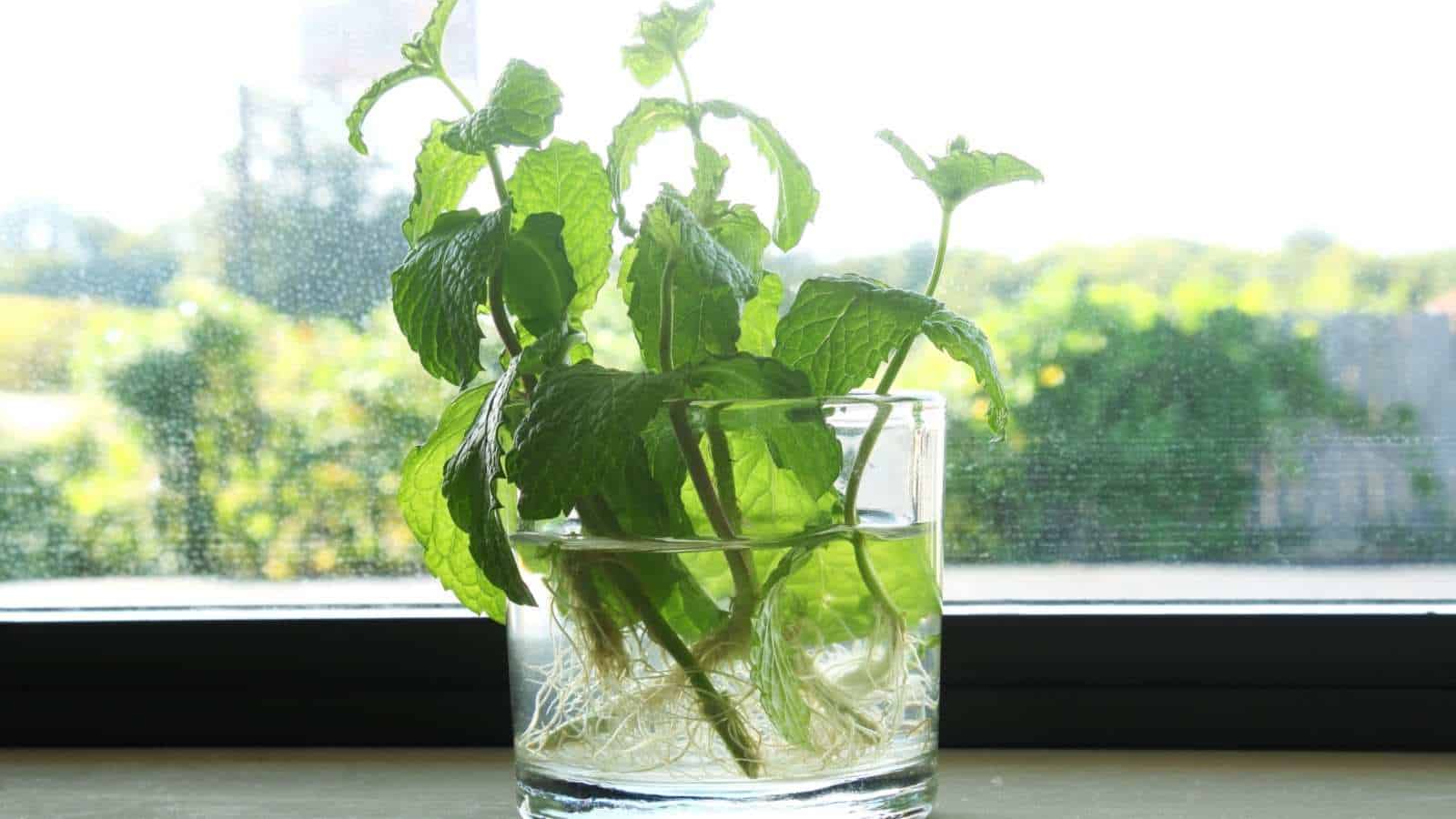
USDA Hardiness Zones: 3-9
Photo voltaic Publicity: Full photo voltaic to half shade
Mint, a popular houseplant, is a vigorous grower recognized for its refreshing aroma and culinary makes use of. It’s a vining plant with upright stems and vivid inexperienced leaves.
What makes it explicit is its means to thrive in a variety of circumstances, along with low delicate circumstances and direct daylight.
Its foliage is lush, and the heart-shaped leaves add a contact of magnificence to any space. Mint is a low-maintenance plant, making it very good for every novice and expert growers.
It could be grown in a container of water, a vessel, or maybe a simple jar, eliminating the need for soil.
If desired, the leaves could possibly be harvested as quickly because the plant is established, and the stalks could possibly be sealed with wax to promote further improvement.
19. Sweet Potato Vine (Ipomoea batatas)
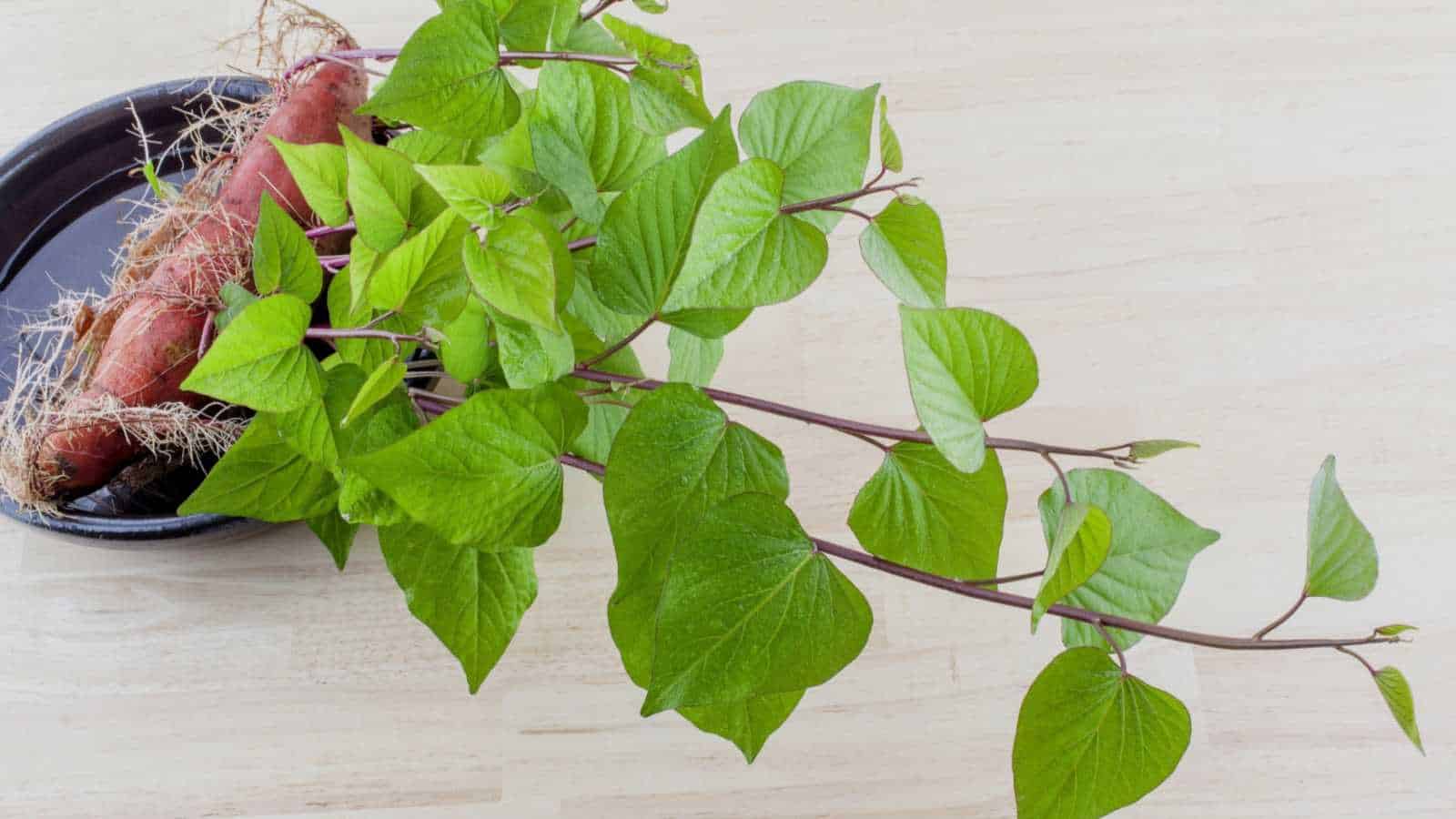
USDA Hardiness Zones: 9 – 11
Photo voltaic Publicity: Full Photo voltaic to Half Shade
Sweet Potato Vine is a popular houseplant renowned for its vibrant inexperienced leaves and vigorous improvement. It is a vining plant with heart-shaped leaves that will make any space actually really feel additional like a tropical paradise.
What makes the Sweet Potato Vine explicit is its adaptability. This plant can thrive in a variety of circumstances, from full photo voltaic to partial shade, making it a versatile choice for every indoor and out of doors gardening.
The Sweet Potato Vine may also be a low-maintenance plant, which makes it a super choice for novice growers. It could be grown in a jar or completely different vessel full of faucet water, bottled water, or rain water. The plant takes nutritional vitamins from the water, eliminating the need for soil.
However, to cease algae improvement, it is endorsed to utilize an opaque container and alter the water recurrently. For those who occur to find your plant’s leaves turning yellow, it could possibly be due to chlorine in faucet water, throughout which case it is best to vary to rain or bottled water.
For optimum improvement, place your Sweet Potato Vine in a location with vivid indirect delicate. Direct daylight can scorch the foliage, whereas low delicate circumstances can stunt improvement. A liquid fertilizer could possibly be added to the container of water for added nutritional vitamins.
In conclusion, the Sweet Potato Vine is a beautiful, easy-to-care-for plant that will add a contact of greenery to any space. Its low-maintenance nature and adaptableness make it a tremendous choice for every beginner and expert gardeners.
20. Paperwhite Narcissus (Narcissus papyraceus)
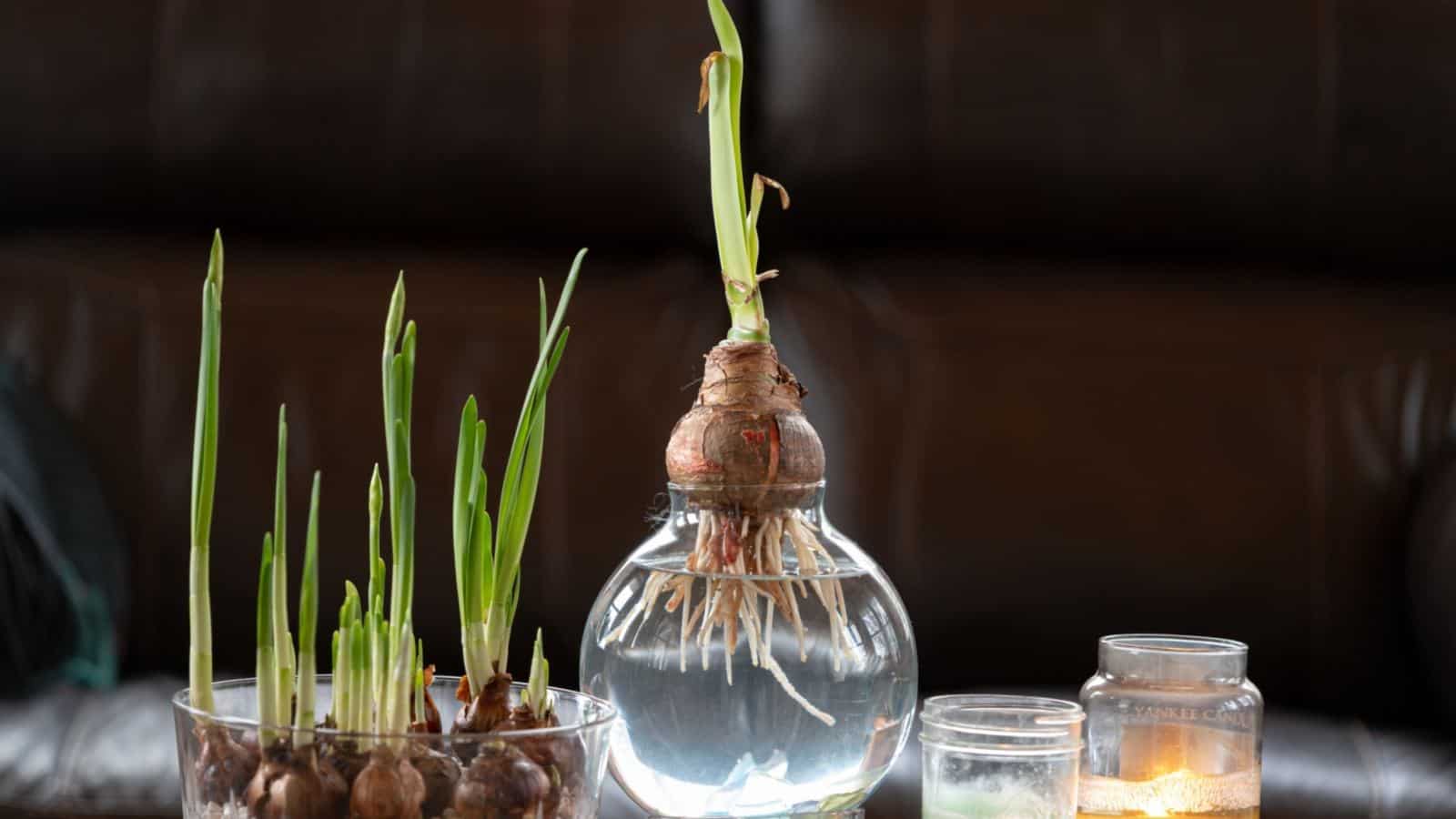
USDA Hardiness Zones: 8 – 10
Photo voltaic Publicity: Full Photo voltaic to Partial Shade
Paperwhite Narcissus, a popular houseplant, is a low-maintenance, vigorous grower that is often chosen for its beautiful upright, inexperienced leaves and heart-shaped bulbs.
This vining plant thrives in vivid indirect delicate, nevertheless can also tolerate low delicate circumstances, making it a versatile choice for any residence.
What makes the Paperwhite Narcissus explicit is its means to develop not solely in soil, however as well as in water. Merely place the bulbs in a vessel, equal to a jar or vase, full of water and watch as a result of the stems and foliage emerge.
Any gardener should keep in mind rising this plant due to its simple care and delightful visuals. It’s a pleasure to see the stalks rise from the water, adopted by the formation of leaf nodes and the eventual bloom of the flowers.
Moreover, it’s fascinating to take a look at the roots creating inside the container of water and absorbing the nutritional vitamins they need to flourish.
21. Caladium (Caladium spp.)
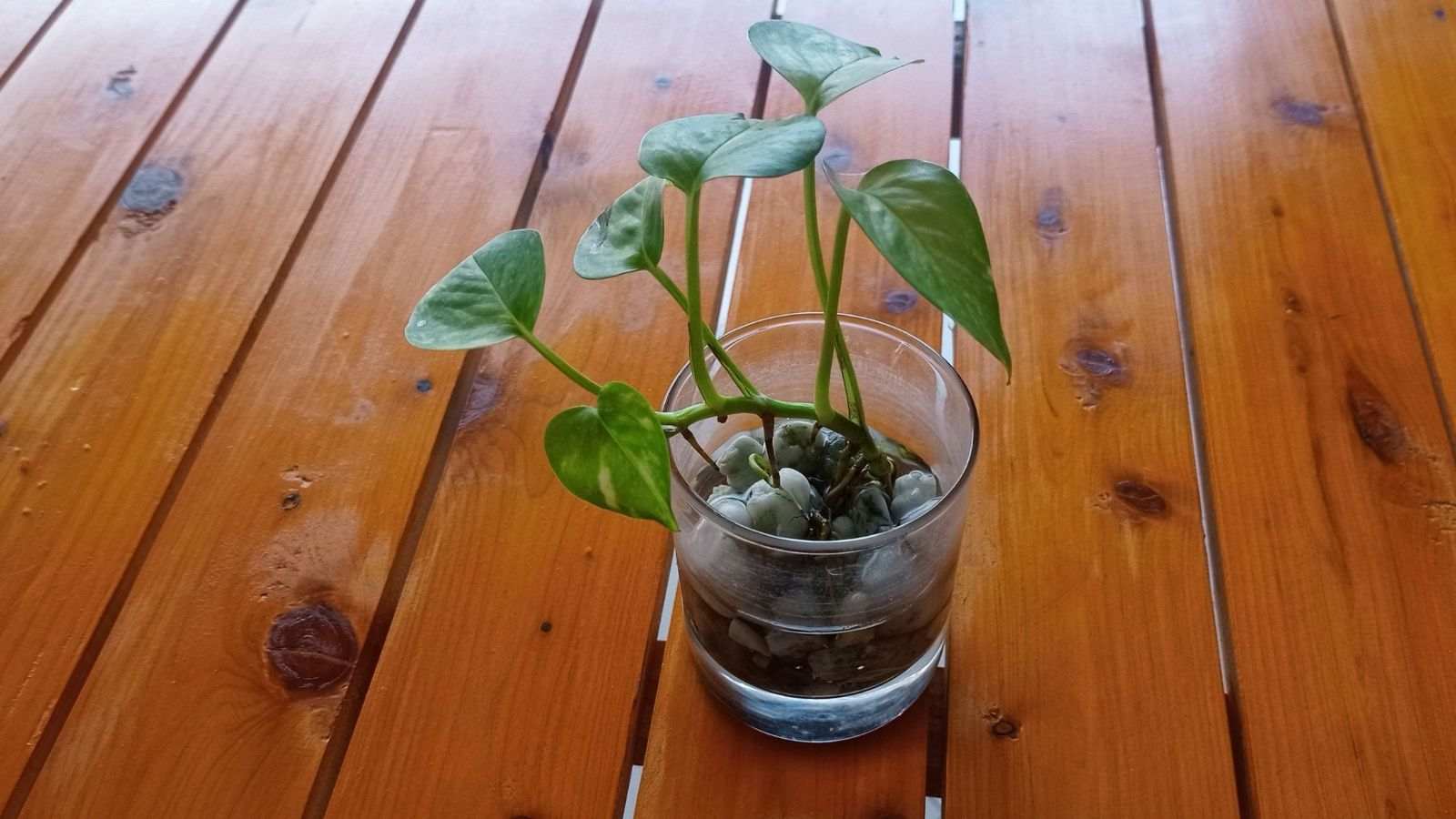
USDA Hardiness Zones: September 11
Photo voltaic Publicity: Partial Shade to Full Shade
Caladium, a popular houseplant recognized for its placing foliage, is a low-maintenance plant that thrives in low delicate circumstances, making it a fantastic choice for indoor gardening. Its large, heart-shaped leaves in vibrant hues of inexperienced, purple, pink, and white make it a visually attention-grabbing addition to any indoor space.
What makes the Caladium explicit is its means to develop in water. This vining plant could possibly be grown in a vessel, equal to a jar or a vase, full of faucet water.
However, it’s advisable to utilize rain water or bottled water to stay away from the chlorine often current in faucet water which might hinder the plant’s improvement.
Any gardener should keep in mind rising Caladiums due to their versatility and ease of care. They’re vigorous growers and may thrive in a container of water, as long as the leaf nodes are submerged.
Direct daylight can scorch the foliage, in order that they like a spot with vivid indirect delicate.
22. Stingray Alocasia (Alocasia macrorrhiza ‘Stingray’)
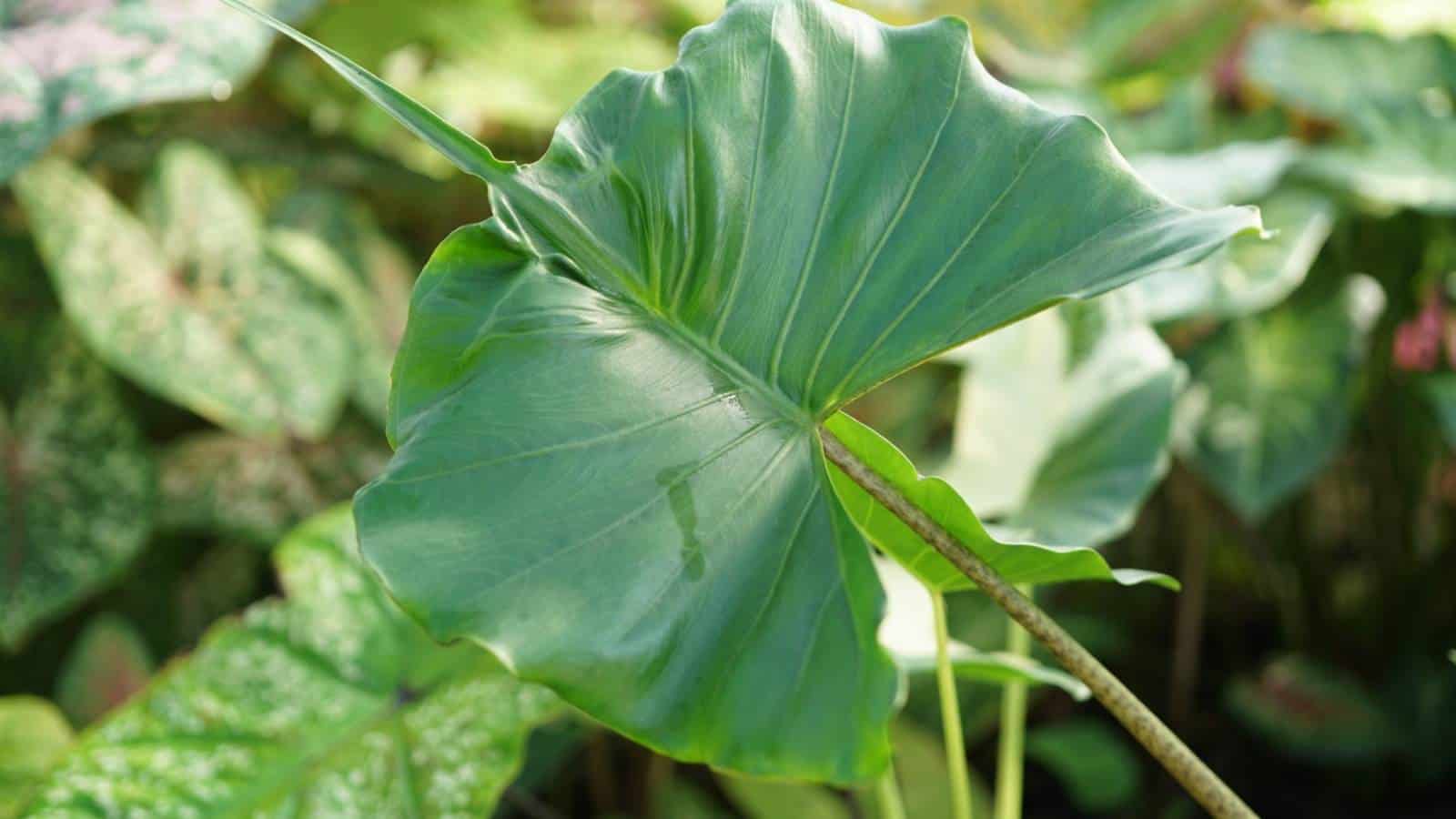
USDA Hardiness Zones: September 11
Photo voltaic Publicity: Vibrant Indirect Delicate
Stingray Alocasia, a popular houseplant, is an consideration grabbing vining plant recognized for its distinctive, heart-shaped leaves.
Its inexperienced leaves, resembling the aquatic animal, the stingray, develop on tall, upright stalks, together with a contact of magnificence and drama to any space.
To develop this plant in water, merely place the bulb in a container of water, guaranteeing the water stage is solely ample to cowl the roots. An opaque container is helpful to cease algae improvement.
Rain water or bottled water is preferred over faucet water, as chlorine can damage the plant. For optimum improvement, add liquid fertilizer to the water to provide important nutritional vitamins.
Whether or not or not positioned in vases or jars, the Stingray Alocasia is certain to make a press launch in your home or office.
23. Ti Plant (Cordyline fruticosa)
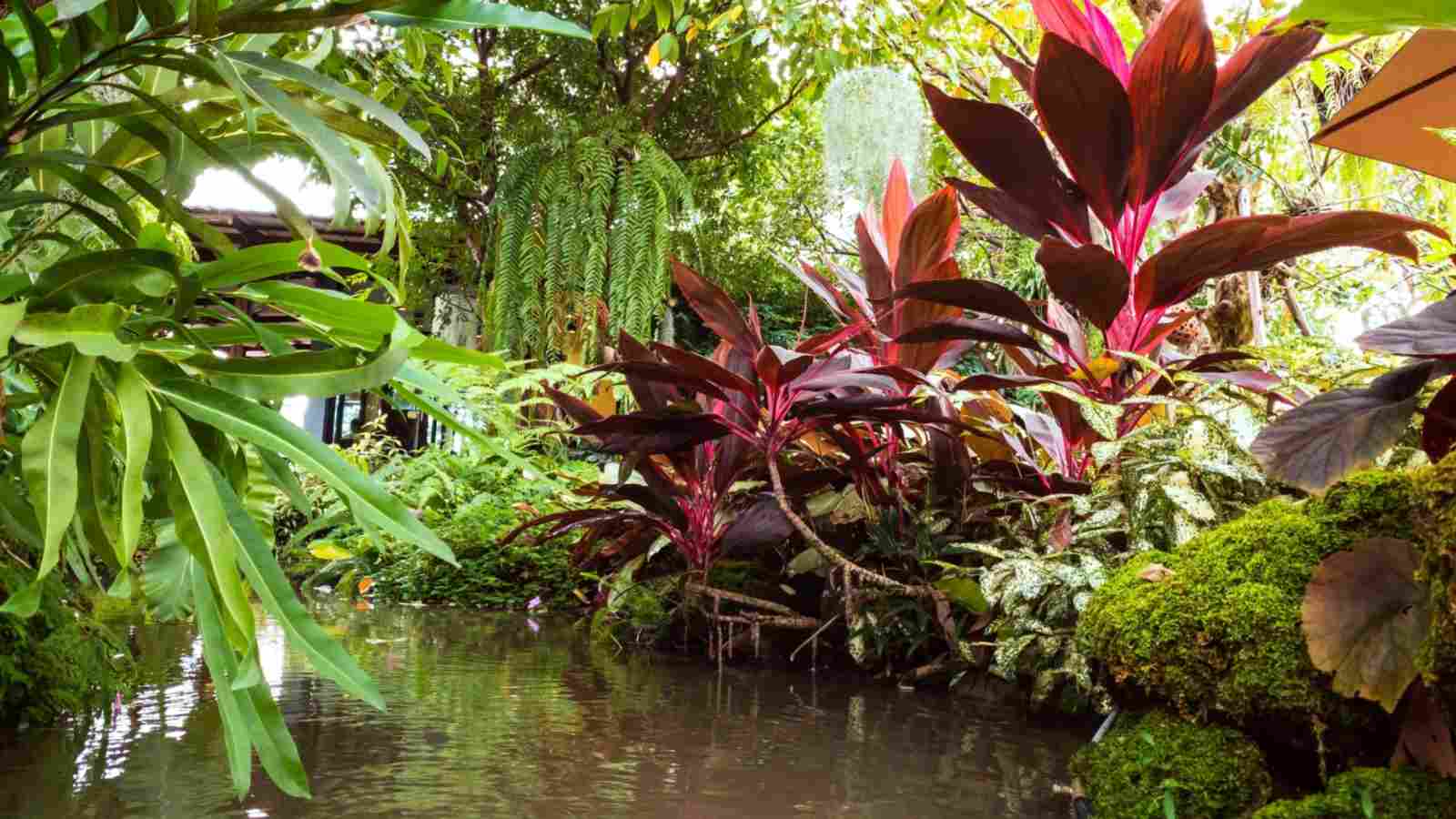
USDA Hardiness Zones: 10-12
Photo voltaic Publicity: Vibrant indirect delicate to partial shade
The Ti Plant, scientifically commonly known as Cordyline fruticosa, is a popular houseplant recognized for its vibrant, shiny inexperienced leaves.
This low-maintenance plant is a vigorous grower, with upright stems that produce a lush abundance of foliage. The leaves are large, often heart-shaped, and may range from inexperienced to purple, together with a pop of shade to any indoor space.
What makes the Ti Plant explicit is its means to develop in water. In its place of soil, you probably can place the stalks or stems in a container of water, equal to a vase, jar, or one other vessel. It’s moreover one in every of many greatest crops to develop!
24. Sweetheart Hoya (Hoya kerri)
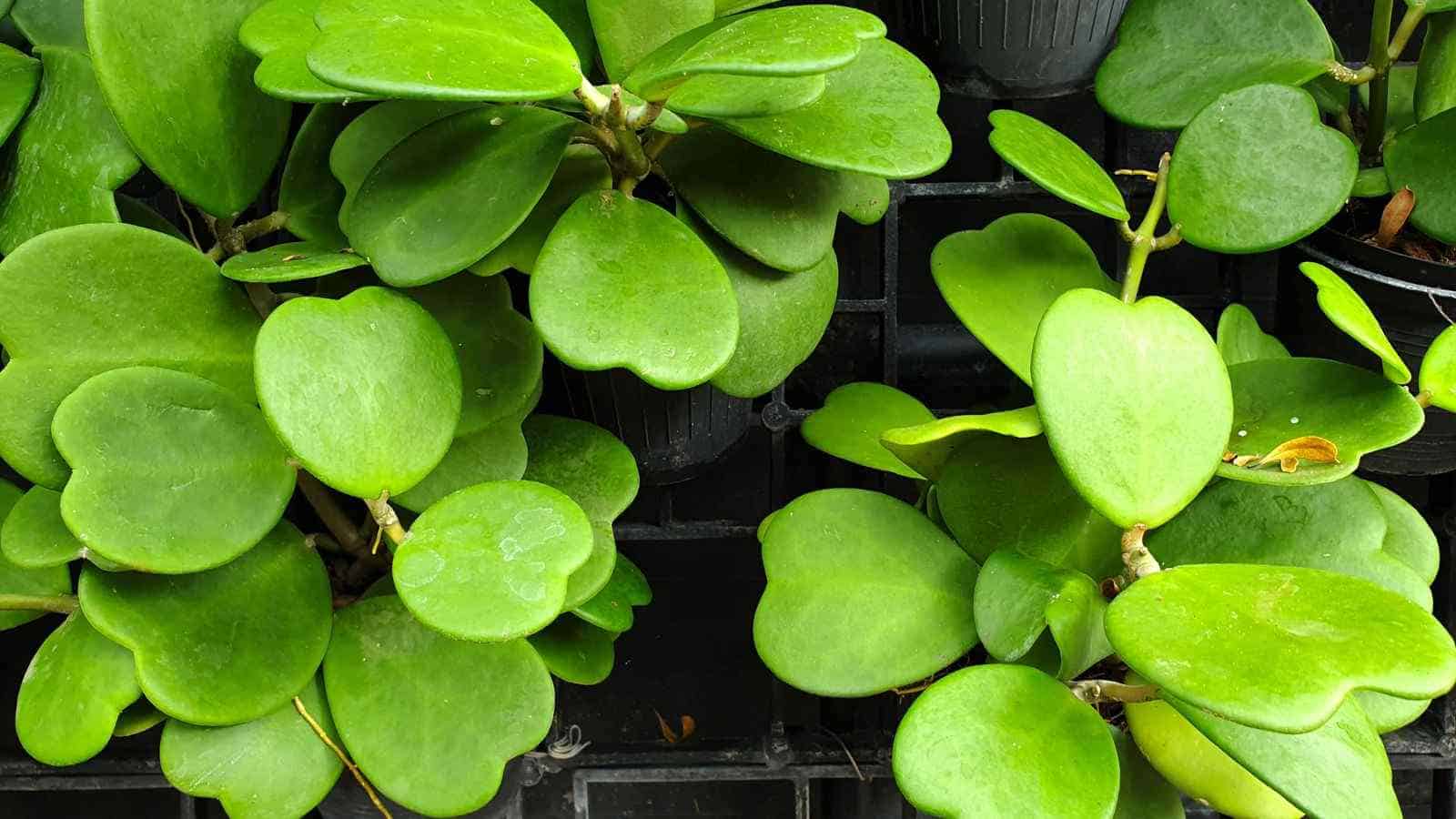
USDA Hardiness Zones: 10-11
Photo voltaic Publicity: Vibrant indirect delicate
Sweetheart Hoya, usually often known as Hoya kerri, is a popular houseplant with its charming heart-shaped leaves and plush inexperienced foliage. This vining plant is a vigorous grower, making it an attention-grabbing choice for every novice and expert growers.
What makes the Sweetheart Hoya explicit is its means to develop in water, a course of commonly known as hydroculture. It’s a low-maintenance plant, requiring solely a vessel – be it a jar, vases, or any opaque container – full of water.
The plant’s stems, full with leaf nodes, are positioned inside the container of water the place they will develop roots.
25. Moth Orchid (Phalaenopsis spp.)
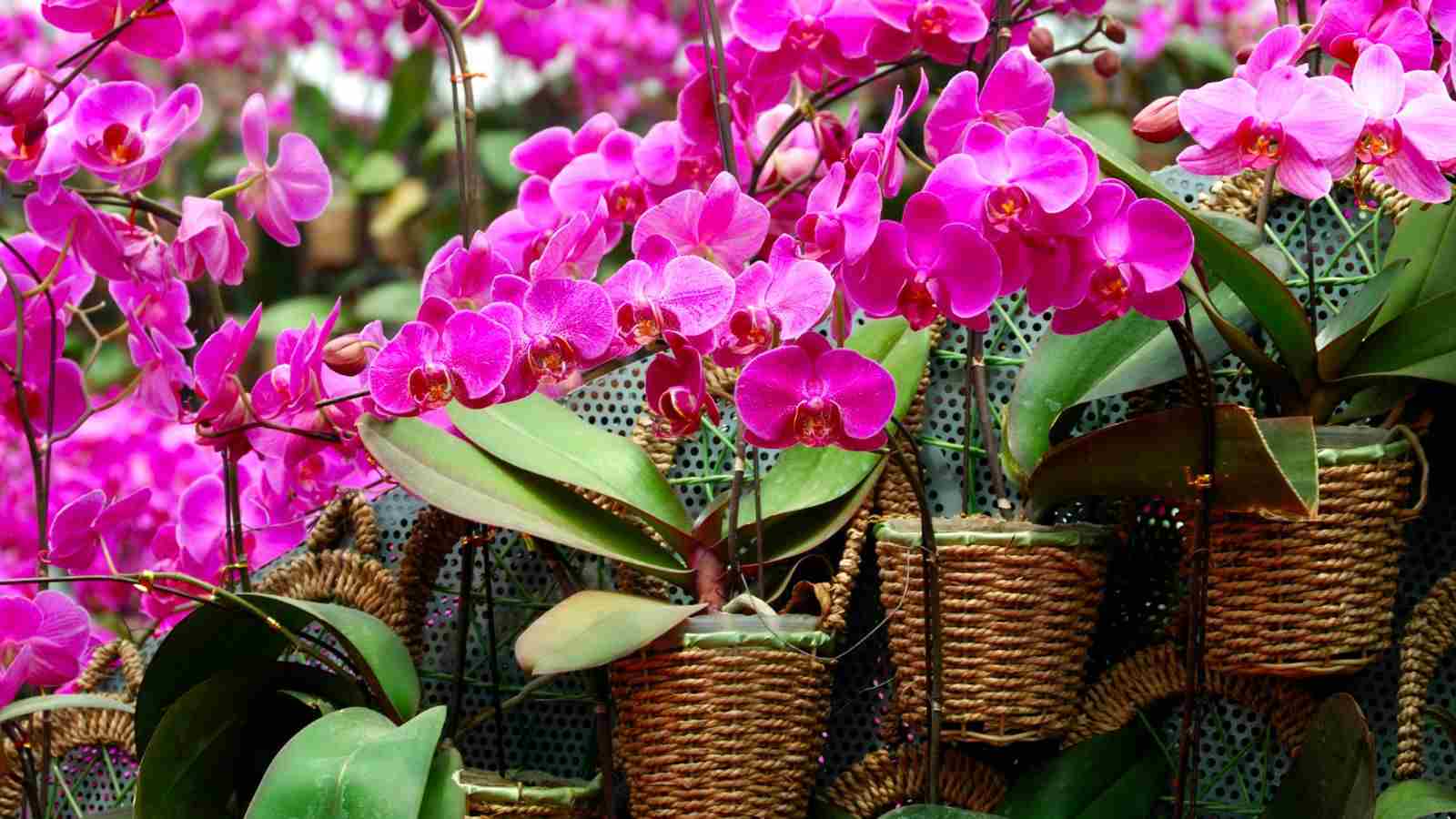
USDA Hardiness Zones: 10 – 12
Photo voltaic Publicity: Vibrant Indirect Delicate
Moth Orchid, scientifically commonly known as Phalaenopsis spp., is probably going one of many hottest houseplants amongst every novice and expert growers.
This low-maintenance plant is well-loved for its vibrant inexperienced leaves and delightful flowers that develop on upright stems.
What makes the Moth Orchid explicit is its means to thrive in water custom, a approach the place the roots are submerged in a container of water.
This allows the plant to absorb important nutritional vitamins immediately from the water, bypassing the need for soil.
For people who’re in quest of a placing, however easy-to-care-for houseplant, the Moth Orchid is a unbelievable choice. It’s not solely a vigorous grower, however as well as a spectacular addition to any indoor yard.
26. Prayer Plant (Maranta leuconeura)
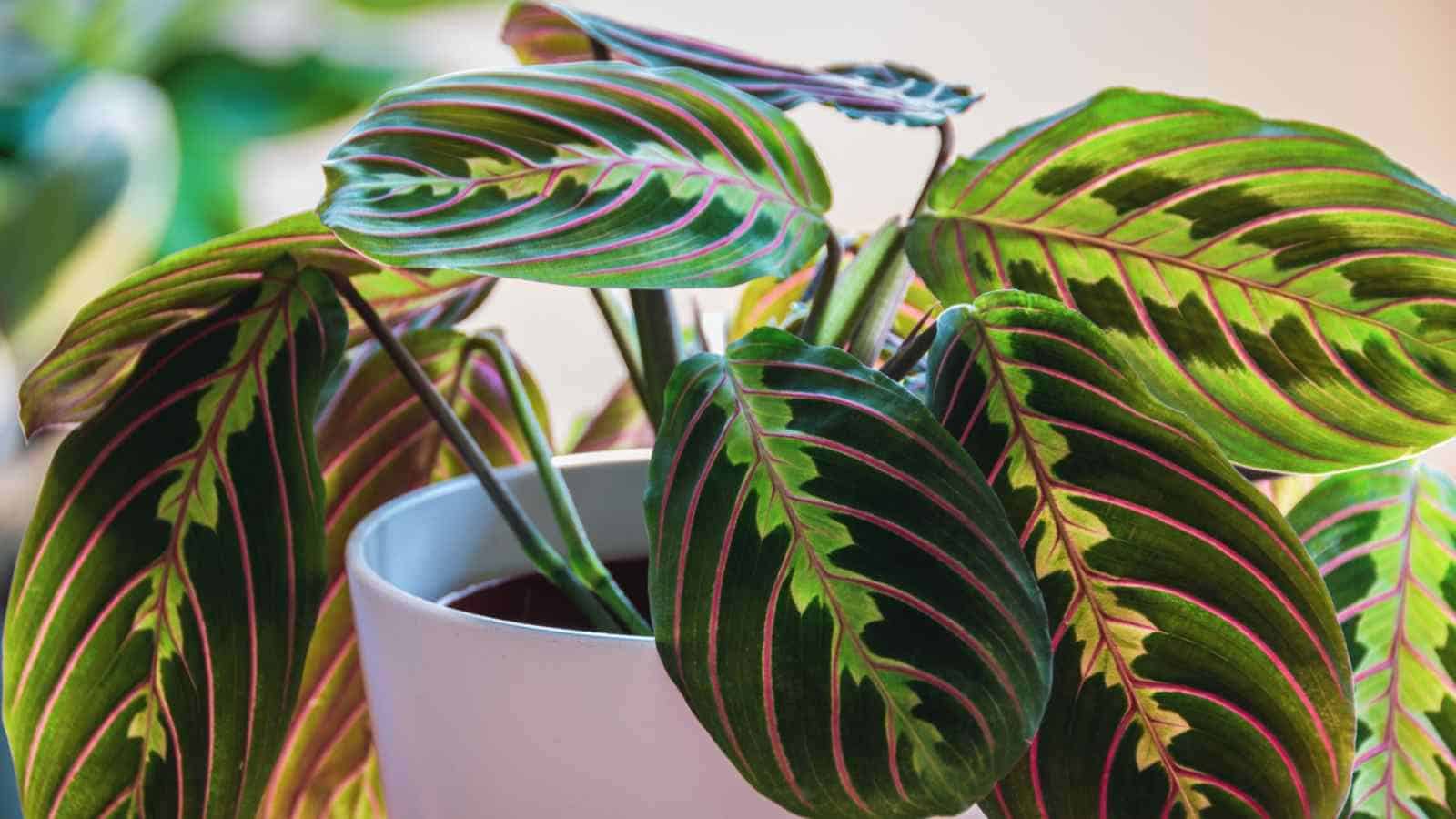
USDA Hardiness Zones: 11-12
Photo voltaic Publicity: Low to vivid indirect delicate
Prayer Plant, scientifically commonly known as Maranta leuconeura, is probably going one of many widespread houseplants due to its low-maintenance nature and placing foliage.
This vining plant is renowned for its beautiful, heart-shaped inexperienced leaves that operate distinctive patterns and colors.
What makes the Prayer Plant explicit is its means to thrive in water. It could be propagated in a container of water, equal to a jar or a vase, making it an outstanding choice for indoor hydroponics.
The plant’s stems could possibly be cut back below the leaf nodes and positioned in a vessel full of faucet water, rain water, or bottled water.
Moreover, it’s helpful to utilize an opaque container to cease algae improvement and to range the water recurrently to ensure the plant receives the necessary nutritional vitamins. A contact of liquid fertilizer will be useful.
27. Monstera
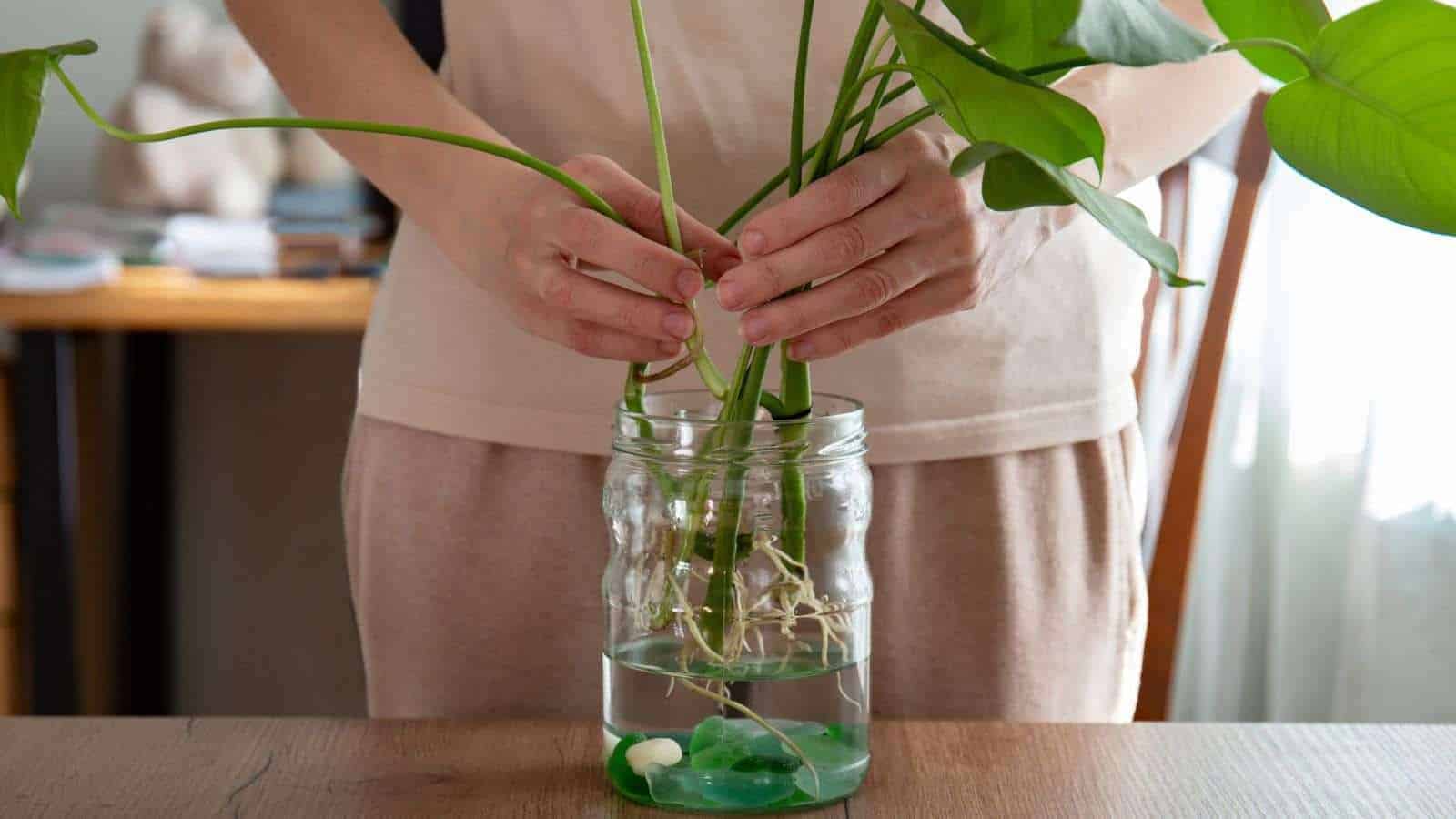
USDA Hardiness Zones: 10 – 11
Photo voltaic Publicity: Shade to Partial Photo voltaic
Monstera, usually often known as the Swiss Cheese Plant, is probably going one of many hottest houseplants amongst indoor growers due to its placing inexperienced leaves and low-maintenance nature.
This vining plant is known for its large, heart-shaped leaves that often have cuts or holes, making a novel and attention-grabbing foliage present.
It could be grown in a container of water, which helps you to observe its root improvement and administration the nutritional vitamins it receives.
Be careful, though, as algae improvement can occur if the plant is saved in an opaque container. To stay away from this, use rain water or bottled water as an alternative of faucet water, as a result of the latter often accommodates chlorine that encourages algae.
For those who occur to’re a fan of houseplants with a tropical vibe, the Monstera is a perfect choice. It’s not solely a plant, it’s a press launch piece that brings a contact of the jungle into your home.
28. Aluminum Plant (Pilea cadiereii)
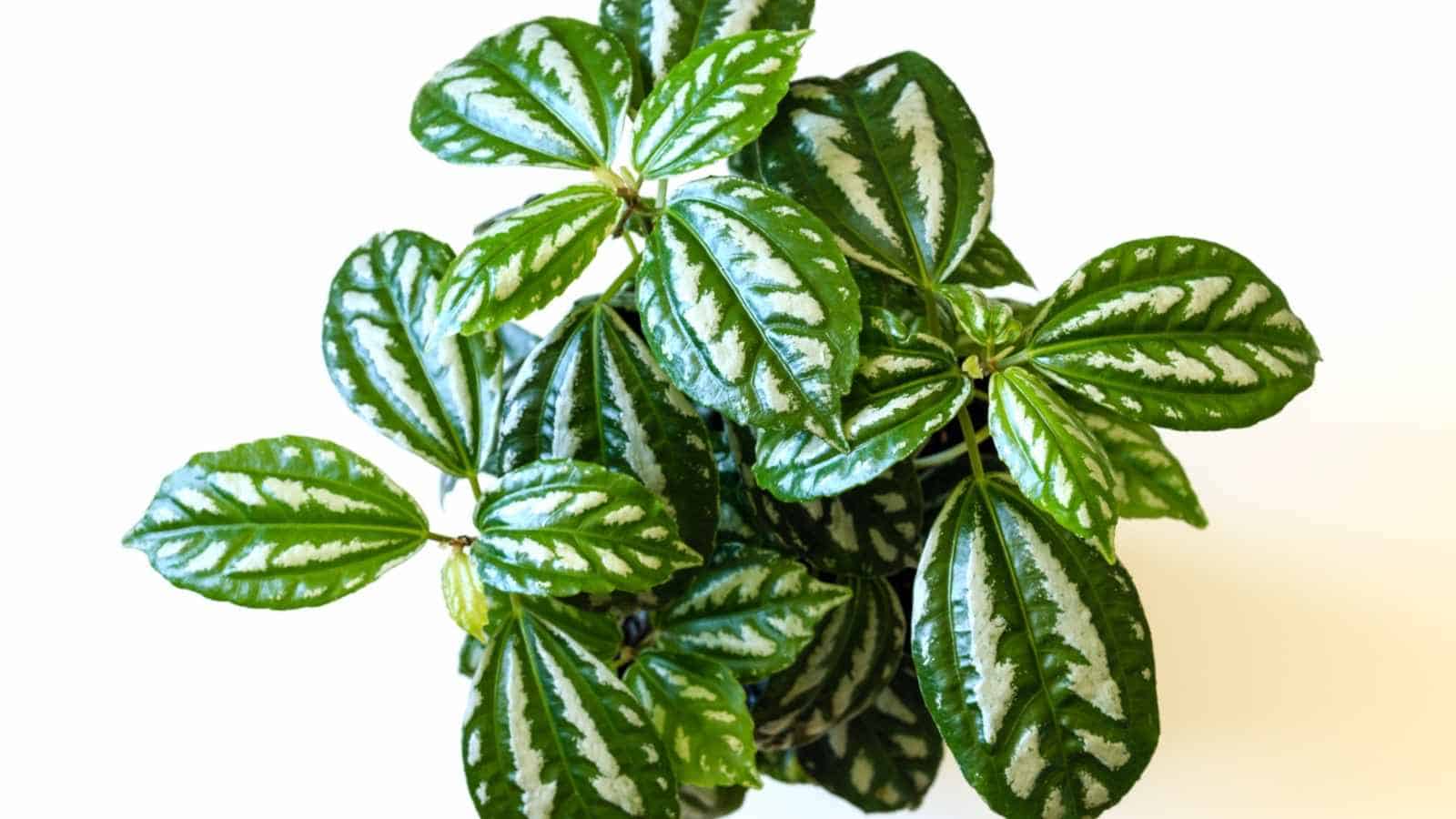
USDA Hardiness Zones: 9 – 11
Photo voltaic Publicity: Vibrant indirect delicate
The Aluminum Plant, scientifically commonly known as Pilea cadiereii, is a popular houseplant treasured for its distinctive, heart-shaped leaves that exhibit a metallic silver pattern in opposition to a deep inexperienced backdrop.
This low-maintenance plant is a vigorous grower, recognized for its upright stems that will attain a peak of 12 inches when grown indoors.
For a decorative contact, keep in mind inserting the cuttings in vases or jars. As quickly as rooted, the Aluminum Plant could possibly be transferred to soil or saved as a vining plant in its water vessel.
This versatile plant is not solely a beautiful addition to your assortment of houseplants, however it certainly moreover gives a novel gardening experience.
29. Diffenbachia (Dieffenbachia)
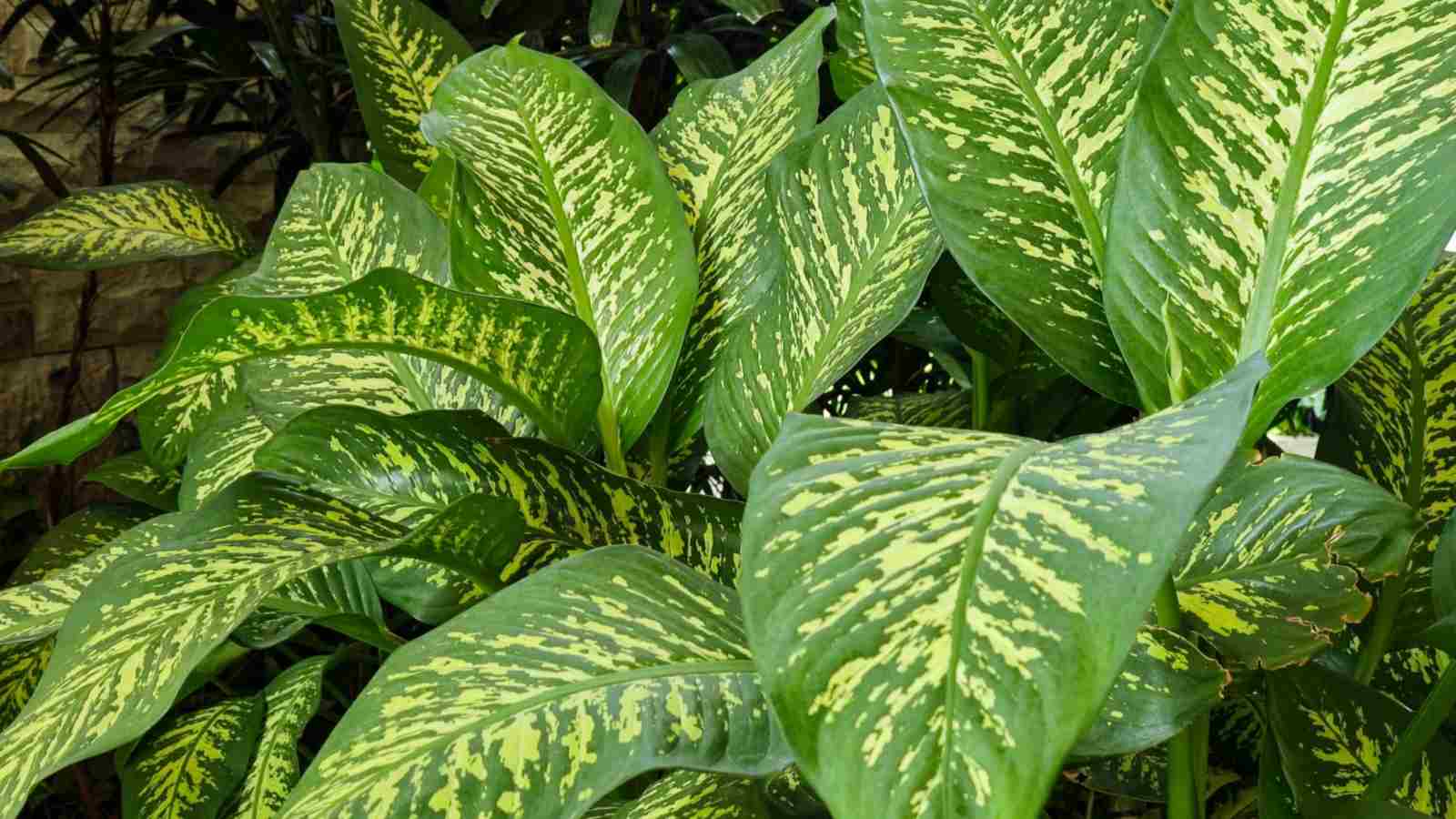
USDA Hardiness Zones: 10 – 12
Photo voltaic Publicity: Low Delicate to Vibrant Indirect Delicate
Dieffenbachia, usually often known as the Dumb Cane, is a popular houseplant renowned for its vibrant inexperienced leaves and upright improvement conduct.
This tropical magnificence is a vigorous grower that will thrive in a variety of indoor circumstances, making it a favorite amongst every novice and seasoned gardeners.
What makes the Dieffenbachia explicit is its foliage. It boasts large, shiny leaves that will range from secure inexperienced to a mix of inexperienced and cream.
The plant’s stems, or stalks, are thick and may help the heavy foliage, giving the plant a sturdy and plush look.
Dieffenbachia is a low-maintenance plant that will develop in water, making it an outstanding choice for people who want to stay away from the mess of soil.
It could be grown in a vessel, equal to a jar or vase, full of faucet water, bottled water, or rain water.
30. Croton (Codiaeum variegatum)
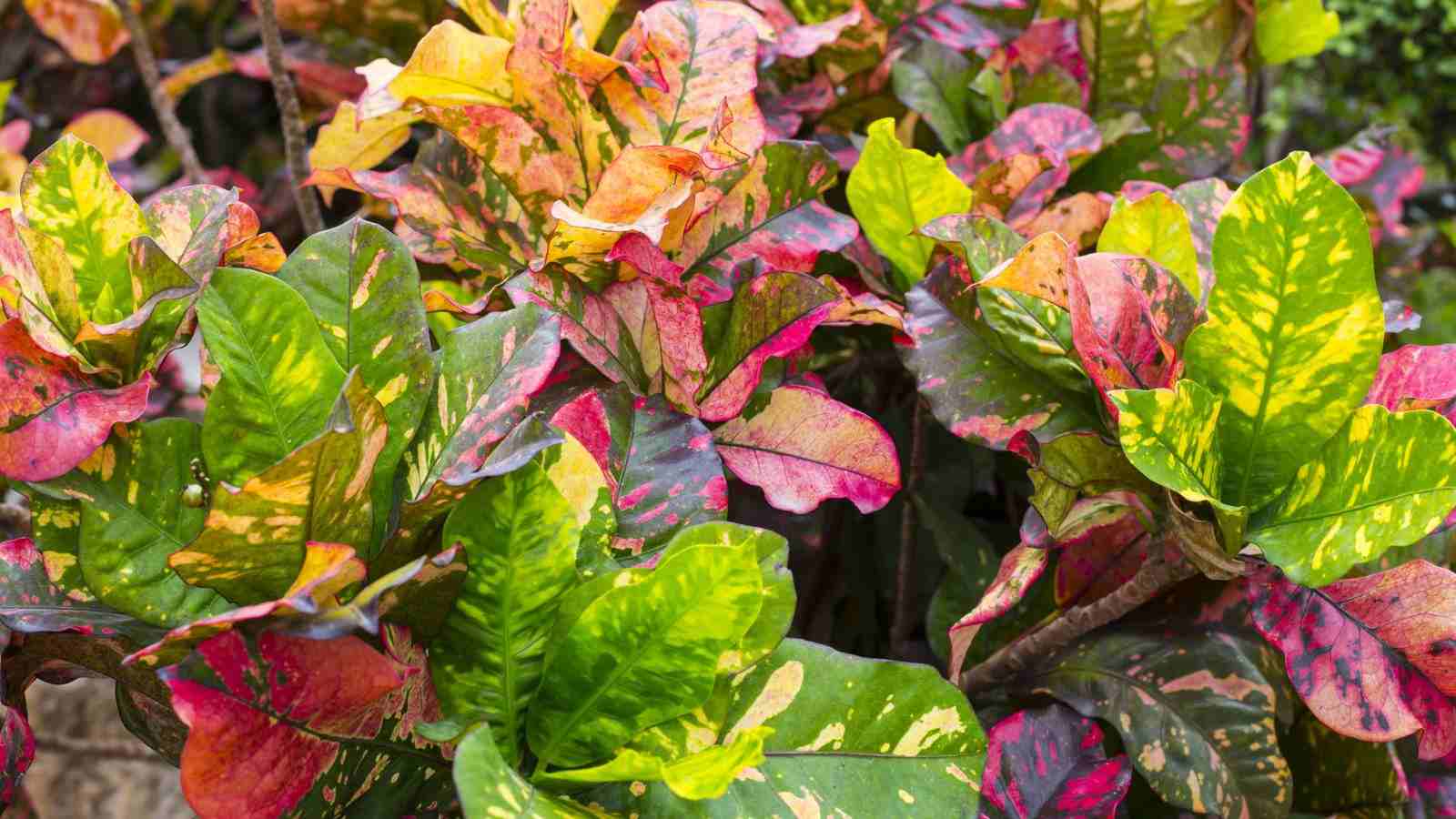
USDA Hardiness Zones: 10 – 11
Photo voltaic Publicity: Vibrant indirect delicate to partial shade
Croton, scientifically commonly known as Codiaeum variegatum, is a popular houseplant treasured for its vibrant, vibrant foliage.
It’s a low-maintenance plant that thrives in a variety of circumstances, making it an outstanding choice for every novice and expert growers.
Croton could possibly be grown in water, making it a super choice for vases or one other vessel. Merely place a stem chopping with a few leaf nodes in a jar or opaque container of water.
The water should be modified recurrently to cease algae improvement and replenish nutritional vitamins. It’s helpful to utilize rain water or bottled water, as faucet water can embody chlorine which can damage the plant.
A dose of liquid fertilizer can also help in providing the necessary nutritional vitamins for the plant. With its placing look and easy care, Croton is a perfect addition to any indoor yard.
31. Fiddle Leaf Fig (Ficus lyrata)
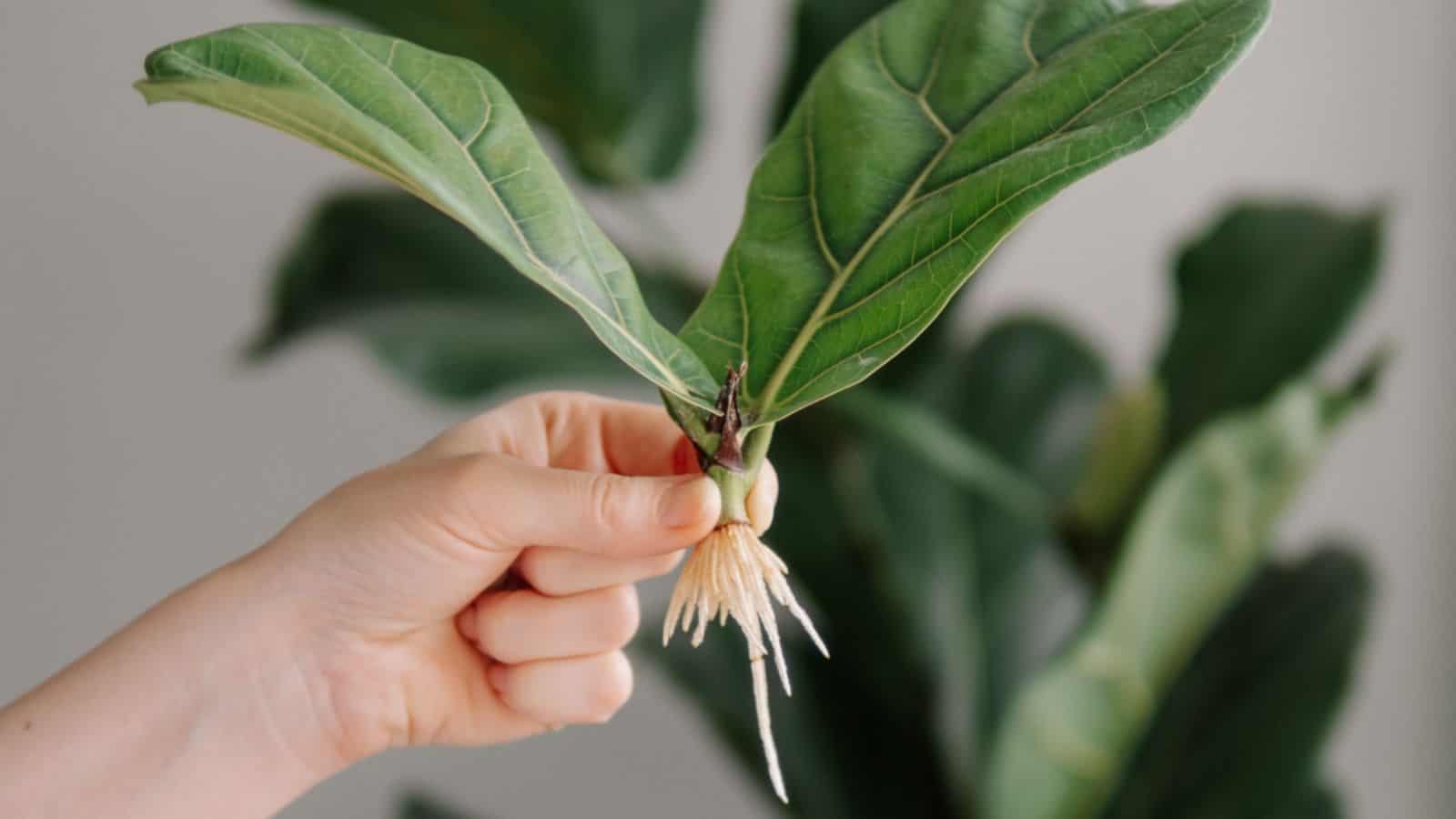
USDA Hardiness Zones: 10-11
Photo voltaic Publicity: Vibrant indirect delicate
Fiddle Leaf Fig, scientifically commonly known as Ficus lyrata, is a popular houseplant that’s preferred by many growers for its vigorous improvement and low-maintenance care.
This upright plant is known for its large, shiny, inexperienced leaves which is perhaps often described as heart-shaped.
What makes the Fiddle Leaf Fig explicit is its versatility and adaptableness. It’ll probably thrive in a variety of circumstances, along with low delicate circumstances.
However, it prefers vivid indirect delicate and may reward you with a lush present of foliage if given the suitable circumstances.
To develop a Fiddle Leaf Fig in water, all you need is a vessel, like a jar or an opaque container, to cease algae improvement.
Fill it with rain water, bottled water, or faucet water that’s been uncared for in a single day to remove the chlorine. Then, merely place a stem chopping with just a few leaf nodes into the container of water.
Current it with vivid indirect delicate, away from direct daylight, and watch it develop. You may additionally add liquid fertilizer generally to provide the necessary nutritional vitamins.
32. String of Hearts (Ceropegia woodii)
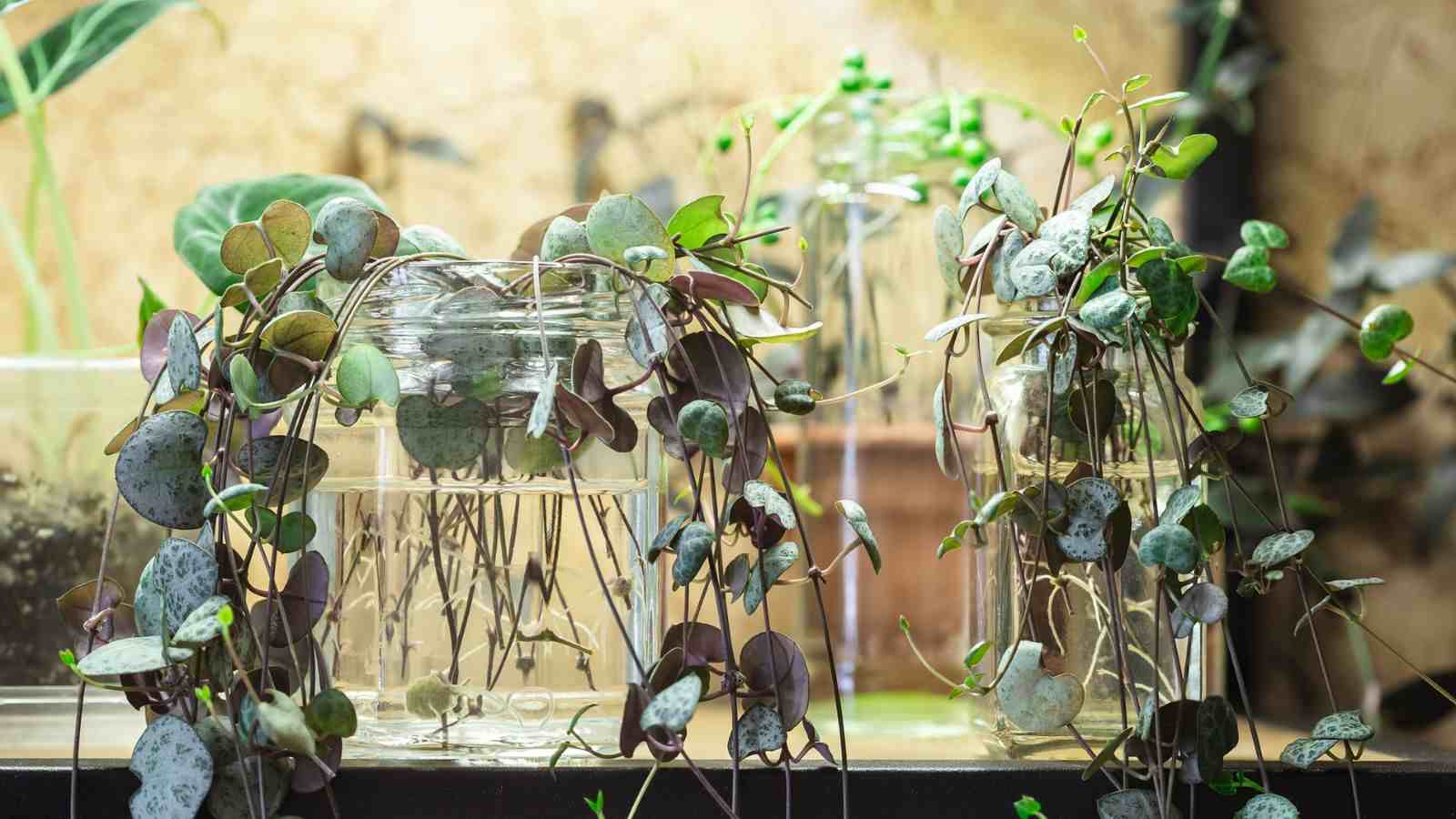
USDA Hardiness Zones: 10-11
Photo voltaic Publicity: Vibrant indirect delicate to partial shade
String of Hearts, usually often known as Ceropegia woodii, is a popular houseplant amongst grasp gardeners and novice growers alike.
This vining plant, with its cascading stems lined in heart-shaped leaves, brings a novel aesthetic to any indoor space.
It is a low-maintenance plant that thrives in vivid indirect delicate and in addition can tolerate low delicate circumstances, making it very good for people who couldn’t have appreciable pure delicate of their properties.
Plus, the inexperienced leaves and trailing stems look lovely in vases or any clear vessel, equal to a jar or an opaque container.
33. Arrowhead Plant (Syngonium podophyllum)
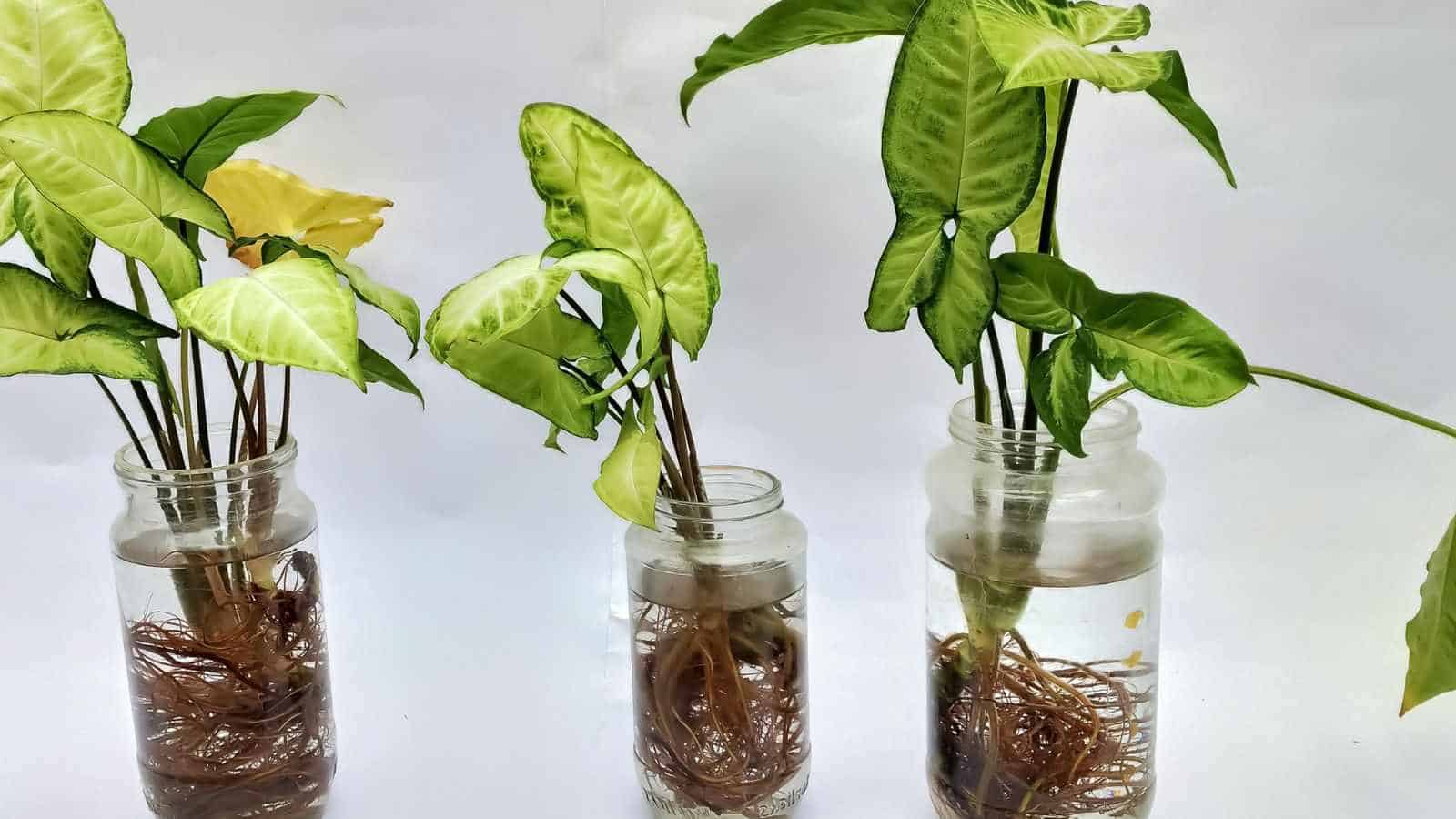
USDA Hardiness Zones: 10-11
Photo voltaic Publicity: Low to Vibrant Indirect Delicate
Arrowhead Plant, usually often known as Syngonium podophyllum, is a popular houseplant recognized for its heart-shaped leaves and vining nature.
This plant is a vigorous grower, often spreading its inexperienced leaves all through the room if given the likelihood.
It’s renowned for its low-maintenance care requirements and its means to adapt to a selection of circumstances, making it a favorite amongst every beginner and expert growers.
What makes the Arrowhead Plant explicit is its means to develop in water. By inserting the stems in a container of water, the leaf nodes will develop roots, allowing the plant to develop upright with out the need for soil.
For optimum improvement, the water should be modified recurrently, and a diluted liquid fertilizer could possibly be added to provide important nutritional vitamins. The plant’s water could possibly be housed in an opaque container to cease excessive delicate publicity, which could lead to algae improvement.
Moreover, its means to develop from cuttings moreover makes it an outstanding choice for propagation.
Completely different Guides from Planet Pure:
Rootless Radiance: 12 Flowers That Defy Soil Norms
Easy to Develop Flowers: 10 Kinds of Flowers Anyone Can Develop
[ad_2]
Provide hyperlink
